This is a continuation from Safari to Kenya – Samburu to Lake Elmenteita that ended with our going to bed at Sunbird Lodge on Tuesday, March 8.
Lake Nakuru National Park (Wednesday, March 9)
To recap, on Tuesday, March 8, we had a long travel day by road from Samburu National Reserve to Sunbird Lodge on the shores of Lake Elmenteita. On the way, we learned a little more about Kenyan culture, geography, and history – my conviction that nothing quite beats seeing a country by road or by rail (airplanes don’t quite cut it) was reaffirmed! We got acquainted with our guide David and settled into Marabou, our cottage for a few days at Sunbird Lodge.
Wednesday morning dawned with the (by now) usual, African flair; we were treated to a gorgeous sunrise over the hills behind our cottage. I was up just before 6am while Iris snoozed. I captured a little of the scene (hard to do justice to that morning) on my phone.
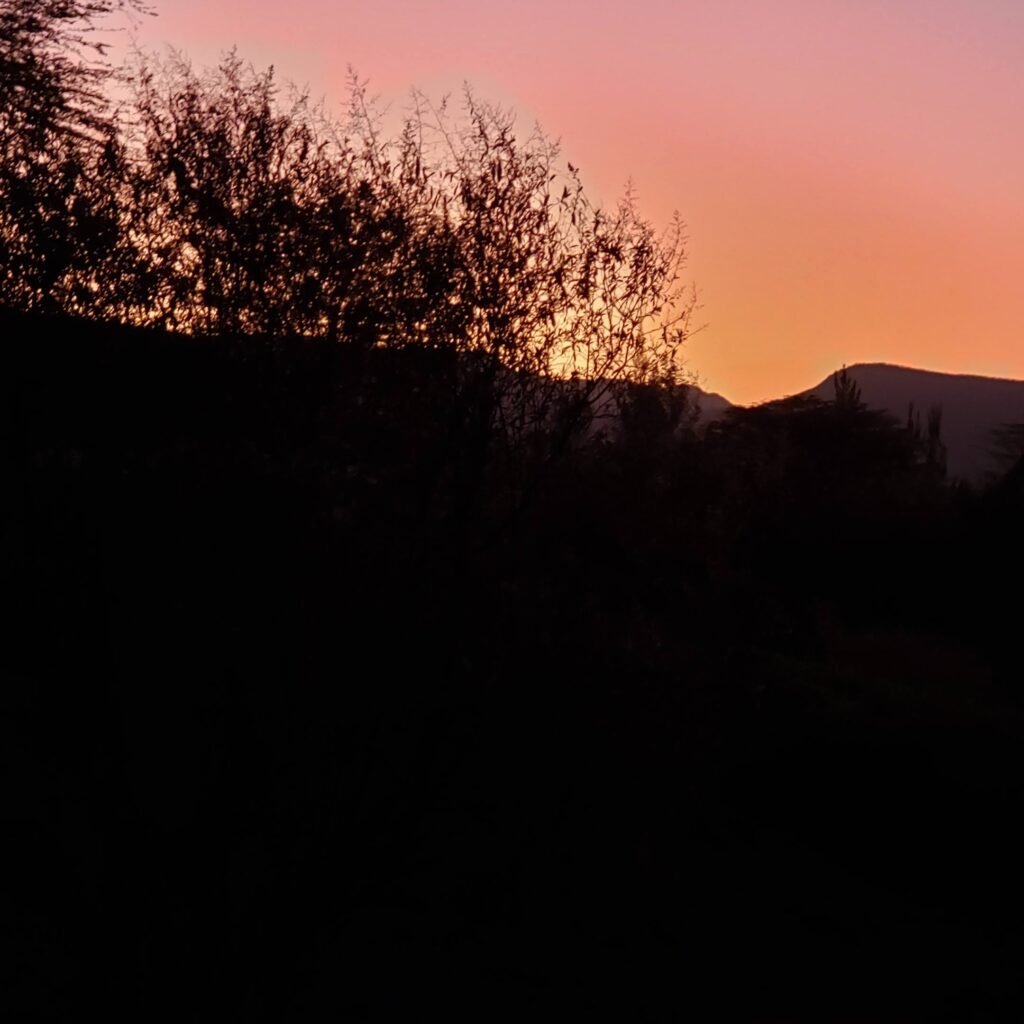
We got going quickly and were soon back at the patio overlooking Lake Elmenteita for an early breakfast. Caroline, our server from dinner the previous night, was there and soon we were tucking into another breakfast and watching a flock of lovebirds pecking on the Ugali that the staff had deposited in their bird feeder.
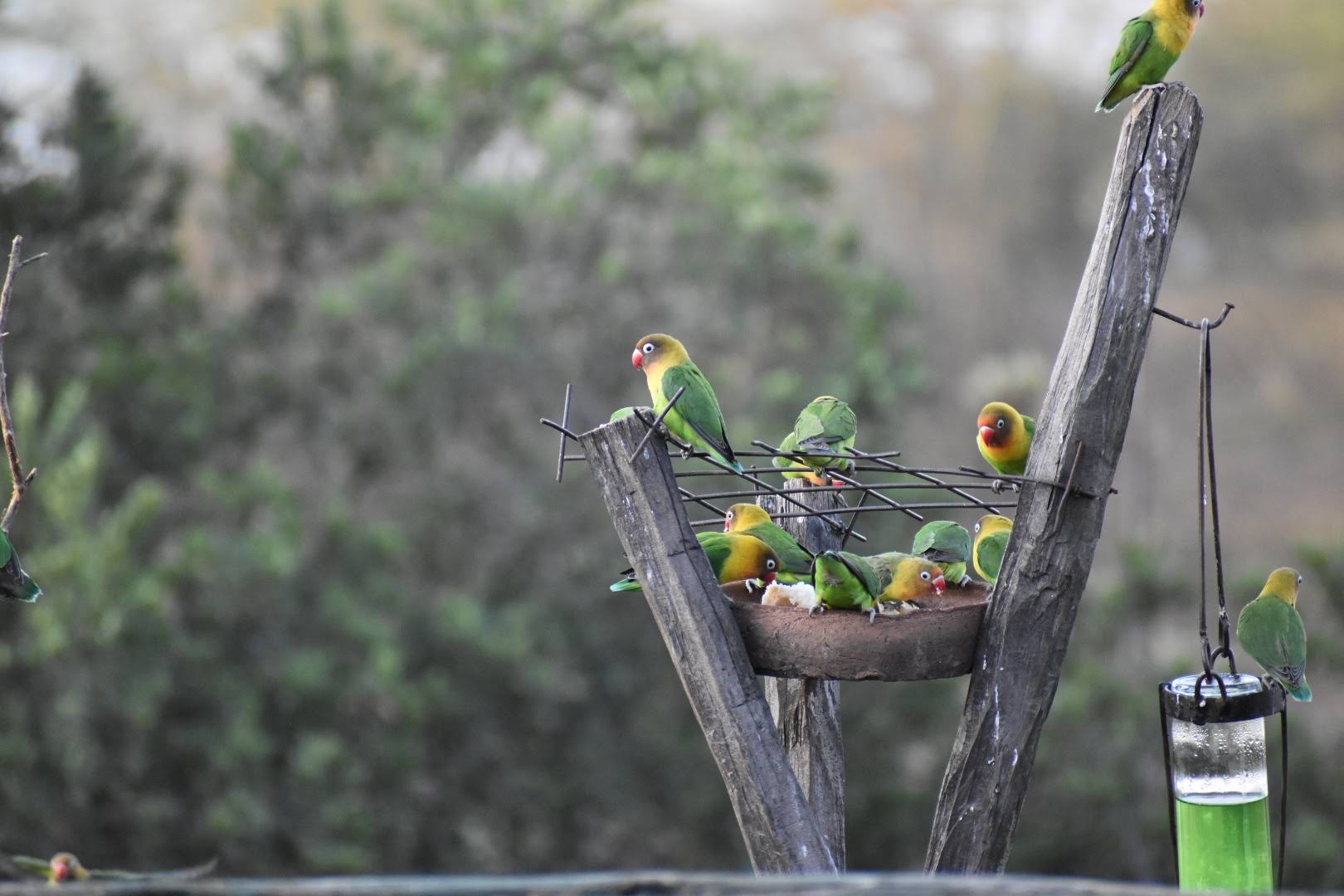
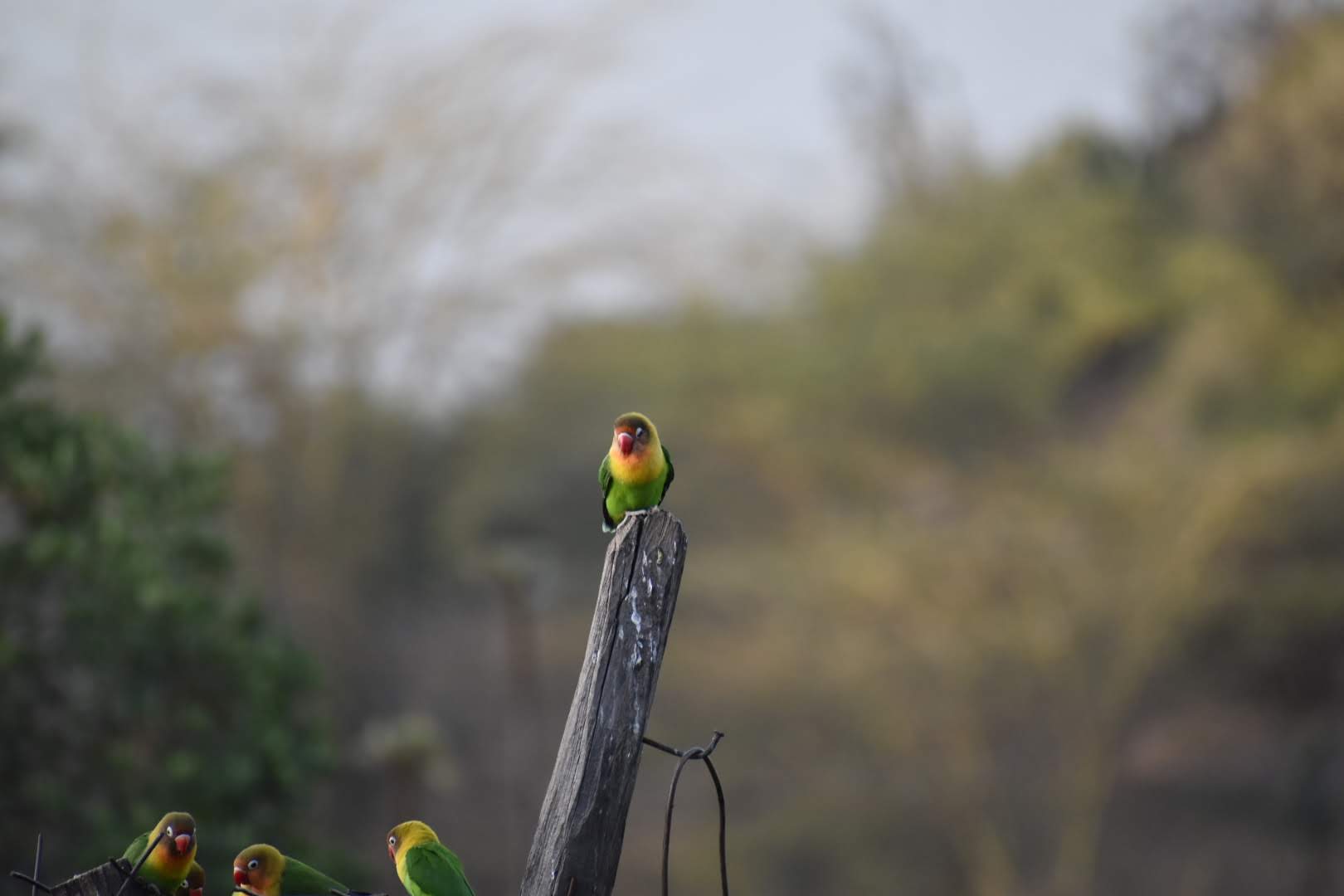
Around 7:20am, David greeted us from the reception area. I hurriedly downed the last of my coffee (tea for Iris as usual), went to say Hello to David, and headed to the 4×4, having checked that David had already eaten. At the reception, Caroline handed us our packed lunch basket as we planned to be out for much of the day at Lake Nakuru National Park.
Soon we were rattling down the unpaved driveway of the lodge and a couple of minutes later, we made a left onto the Nairobi-Nakuru highway headed back in the direction of Lake Nakuru. The 30-minute drive was quite pleasant; while the sun was out, the early morning cool persisted. We went past a couple of conservancies on either side of the road, and David pointed out some Impala and told us a bit more about the ubiquitous Acacia trees. I don’t remember much of the detail but apparently there are gazillion varieties of Acacia. David also pointed out Aloe Vera plants and how they are used in Kenya, not that different from the rest of the world.
By about 8:00am we were in the thick of Nakuru traffic, probably people headed to work. David turned left off the highway down a bumpy side road and drove toward the lake. Soon we were at the Lanet gate of the park where we stopped to allow the rangers to check our permit for the day. David went to negotiate the formalities and I hopped off the 4×4 to chat with a lady seated at the gate toting a very impressive looking weapon – it looked like an AK 47 or something of that nature. I hailed her with a “Jambo!” and she responded in kind. Despite the intimidating hardware, she was super nice, and we talked a little bit – asking where we were from. She told me that she was from the Kamba tribe, like David. We chit-chatted a little more and she told me that the weaponry was mainly to deal with poachers, hardly a problem anymore. Soon permits checked, David came out of the office beside the gate; so, she and I said our goodbyes. As it turned out, David knew her from prior trips to Nakuru and they exchanged some pleasantries in Swahili before we entered the park.
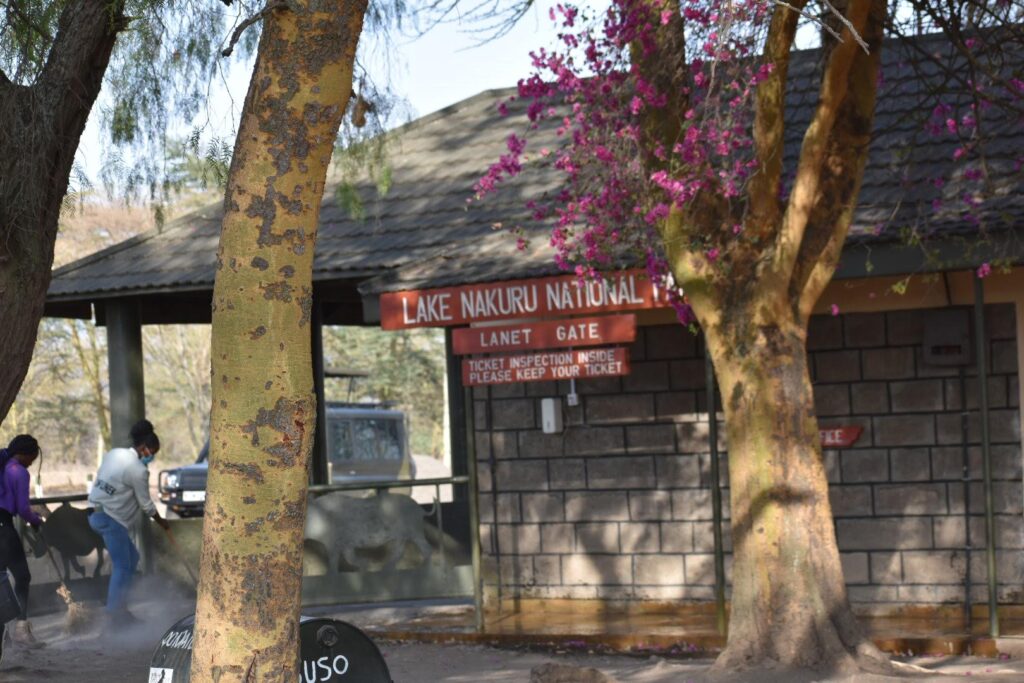
We drove down your typical unpaved dirt track and then crested a rise from which we finally had a panoramic view of the park with the lake in the background. The grass was brown and looked exceedingly dry, with the odd Acacia tree relieving the monotony. The lake was an inviting shade of blue. Some buffalo grazed out in the distance. Strangest in my mind was the sight of the city in the background – only in Kenya have I seen such a juxtaposition of a large urban center with a wildlife park (Lake Nakuru wasn’t an exception either; Nairobi has the same set-up). My sister said that of Guindy National Park in Chennai, India. I suspect that it is not as uncommon as I make it sound!
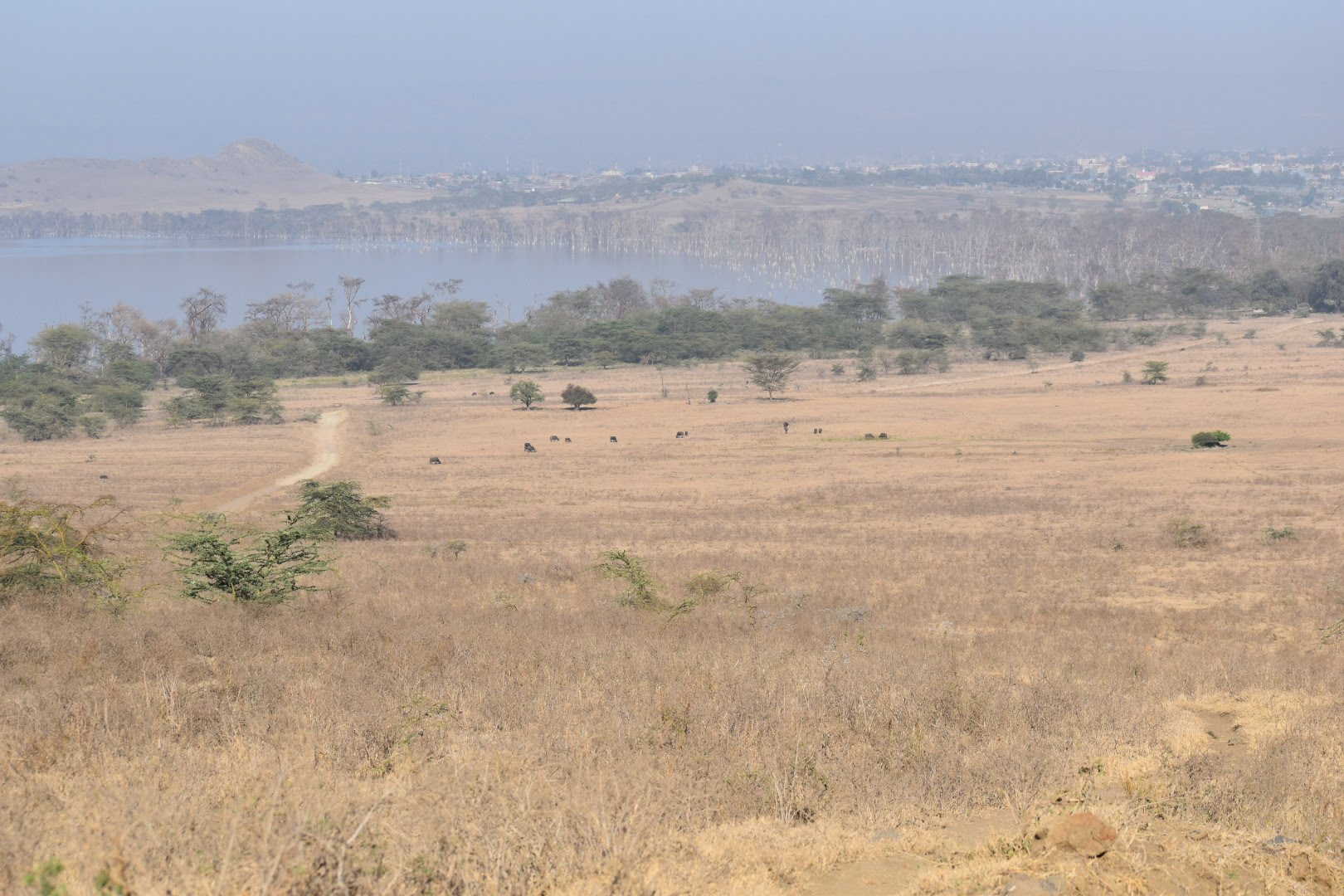

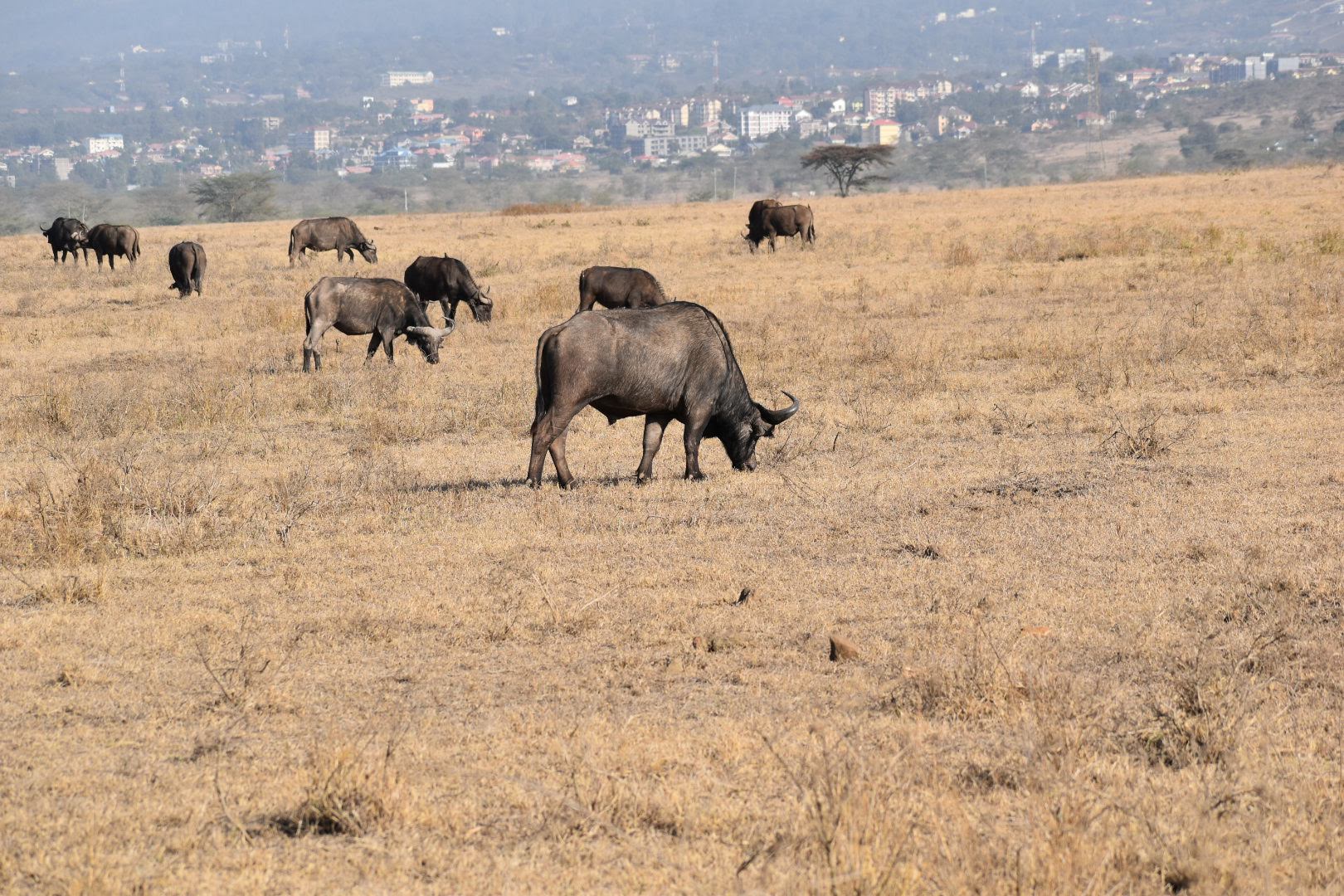
David drove the Toyota Landcruiser further into the park. Soon we were on relatively flat land, in contrast to the undulating terrain when we entered the park. The left side of the vehicle was lightly wooded about 200 yards away with grassland closer to the track, while the starboard side was dry grassland. David stopped and said, “Southern White Rhino!”. Our necks swiveled to where he was looking, toward port and we saw a pair of grey Rhino. (As we learned later, just about every Rhino is grey despite the names – the Black Rhino common in Kenya (critically endangered) is the same coloration. However, they are distinguished by their upper lip – a black rhino has a pointed lip, while white rhinos are adorned with a squarish lip. Black rhinos are far more aggressive while, paradoxically, being very shy and hard to approach. David told us that there were plenty of cases where a black rhino charged a vehicle!)
I got some good photos of the rhinos while we were stopped for about 10 minutes. We then set off again and spotted a Pumba (warthog) digging up its morning meal. David has phenomenal eyesight and a moment later he said Black Rhino out to our 2 o’clock. We looked and couldn’t see anything and said as much. He said, “look out at the tree line towards the fence of the park”, and sure enough, out almost a mile away we could see what looked to us like a rhino! David drove us a little closer (maybe a half mile away) and told us that if we drove any closer, it would get alarmed and move away. Thanks to my trusty 75-300mm telephoto lens, I finally managed to capture a few passable images. It was surreal to see a rhino with a backdrop of buildings!
We chatted a little about the functionally extinct Northern White Rhinoceros. David told us that there were a pair of females in the Ol Pejeta Conservancy, the last two specimens in the wild. Efforts are underway to fertilize the harvested eggs from the females with a deceased male and implant the (hopefully) resultant embryos within a Southern White Rhino surrogate mother. Meanwhile the females live with 24-hour armed guards on Ol Pejeta, a sad testimony to the nature of our world. One can only hope that the procedure works, and we leave a few more Northern White Rhinoceros for posterity.
(The first two photos below are of the Southern White Rhinoceros; the latter two are of the black Rhino.)
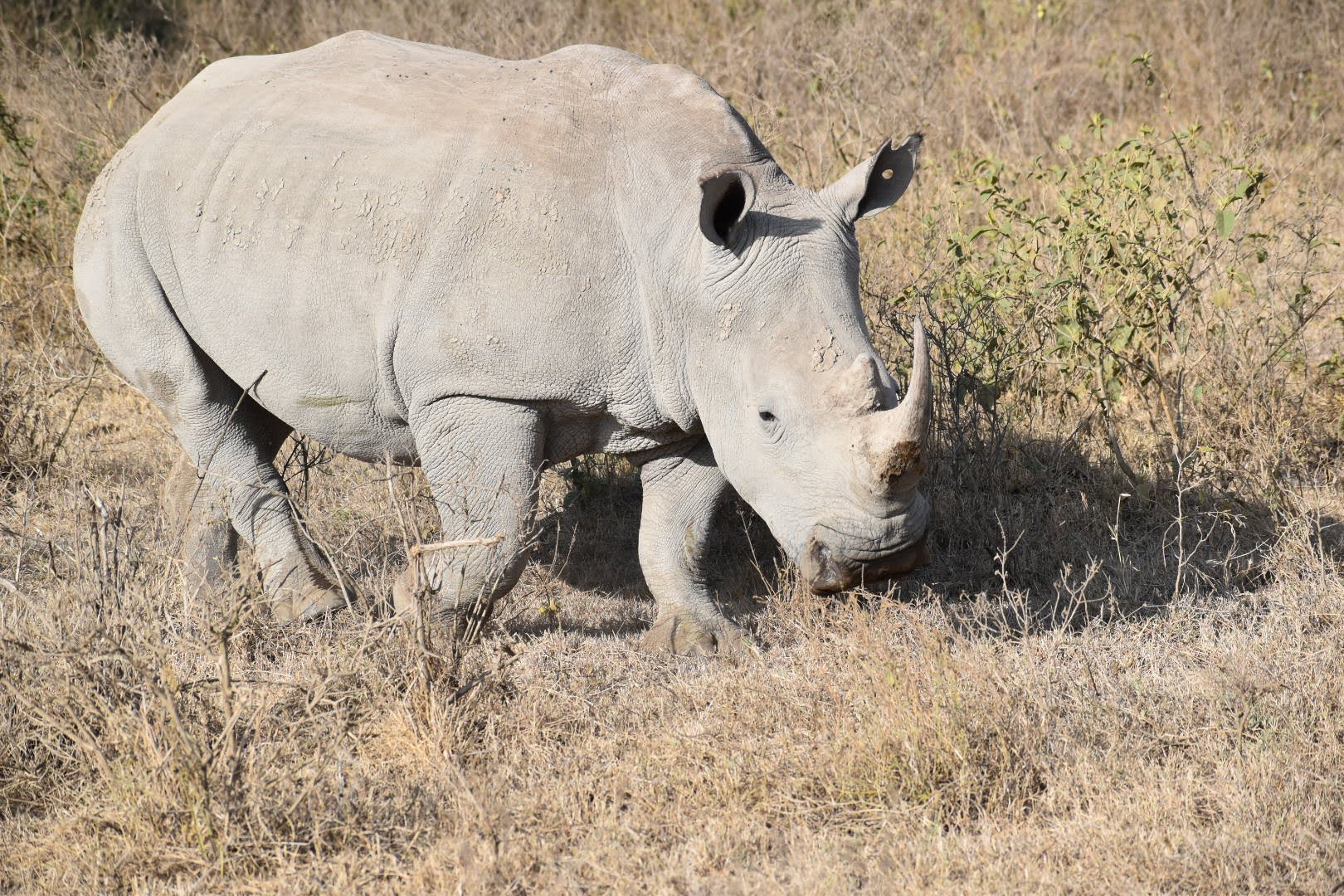
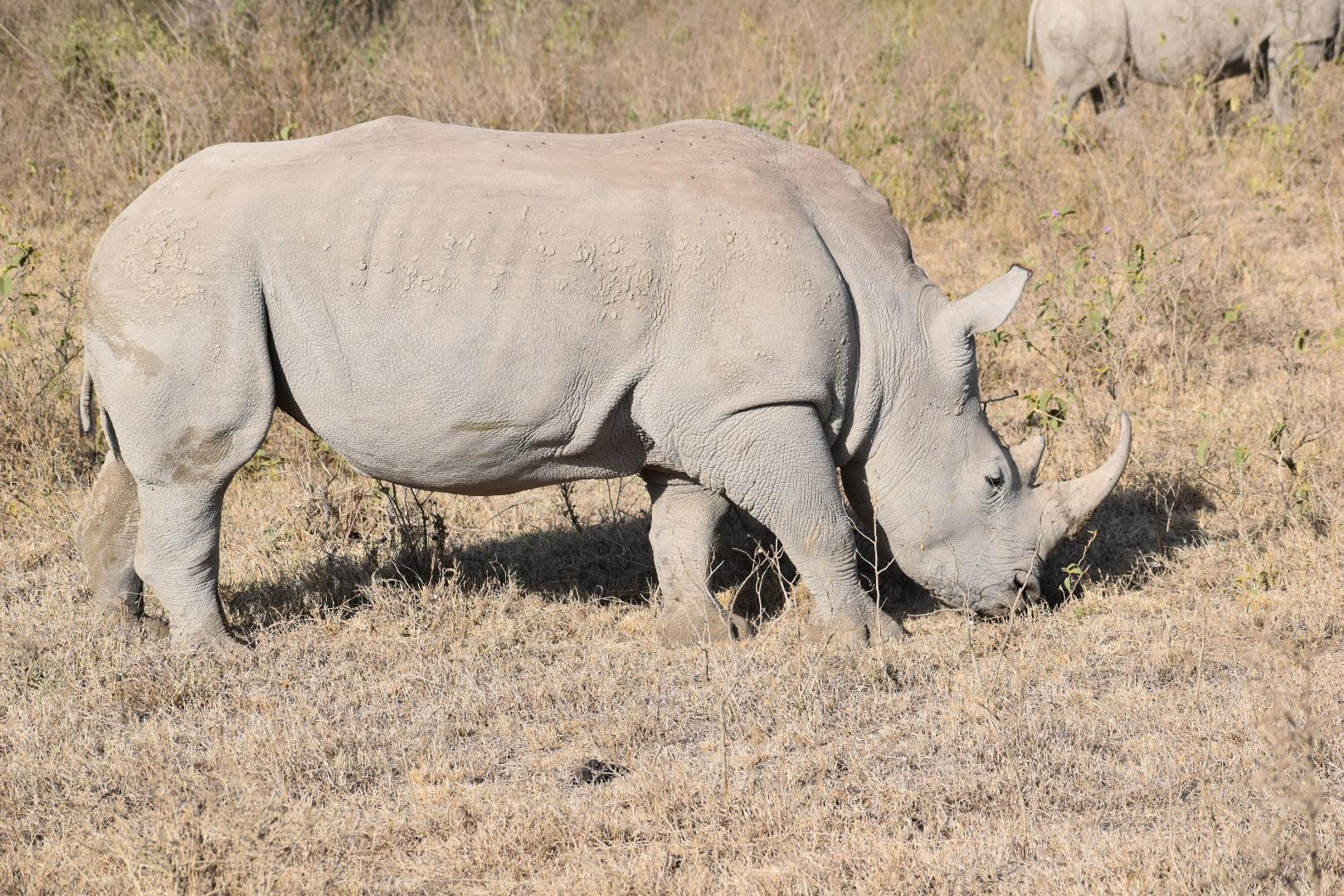
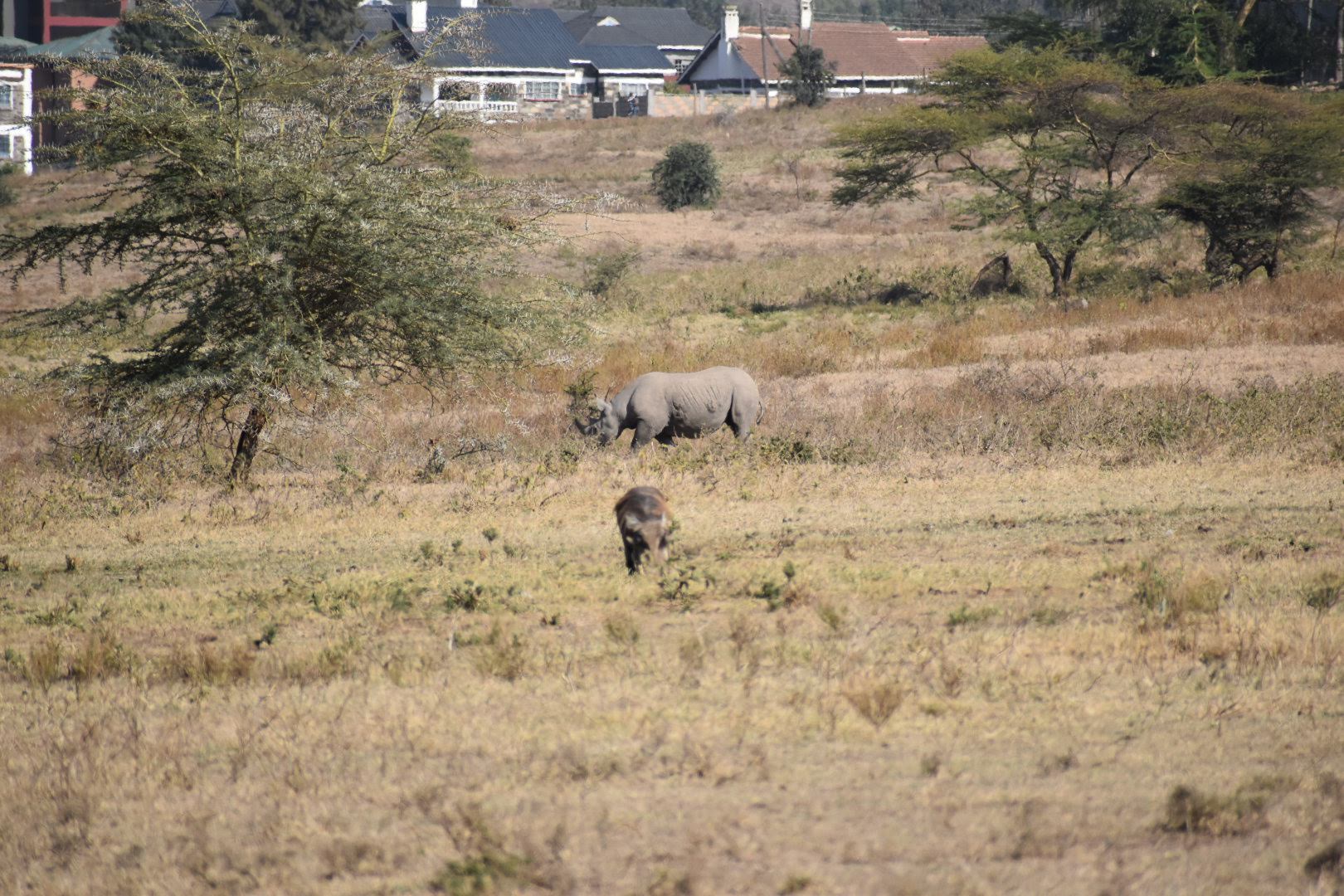

We moved on and soon we saw a herd of Buffalo. We then pulled up close to an abandoned set of buildings within the park with a few trees around these. There we saw a troop of Baboons, some scrabbling for food (probably insects) on the arid ground while others groomed each other on a window ledge.

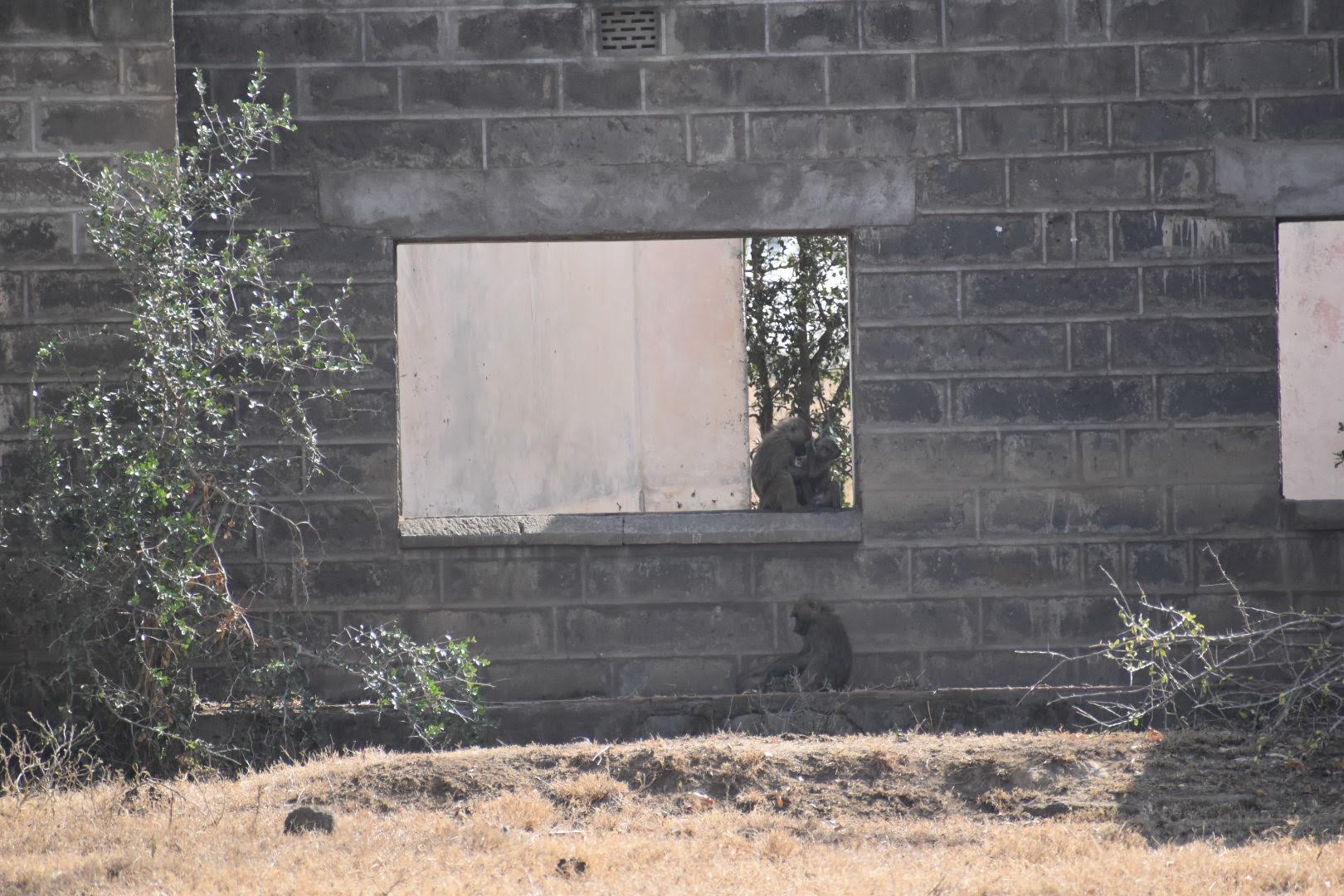
As we drove on, this time toward a hill bordering the eastern end of the park, we saw plenty of Zebra, then more Buffalo. David then stopped suddenly and said, “Colobus Monkey!”. We watched as a pair of these monkeys (we had never seen anything quite like it) hopped down from a tree branch and then moved in leisurely fashion up the hill on a dry stream bed.
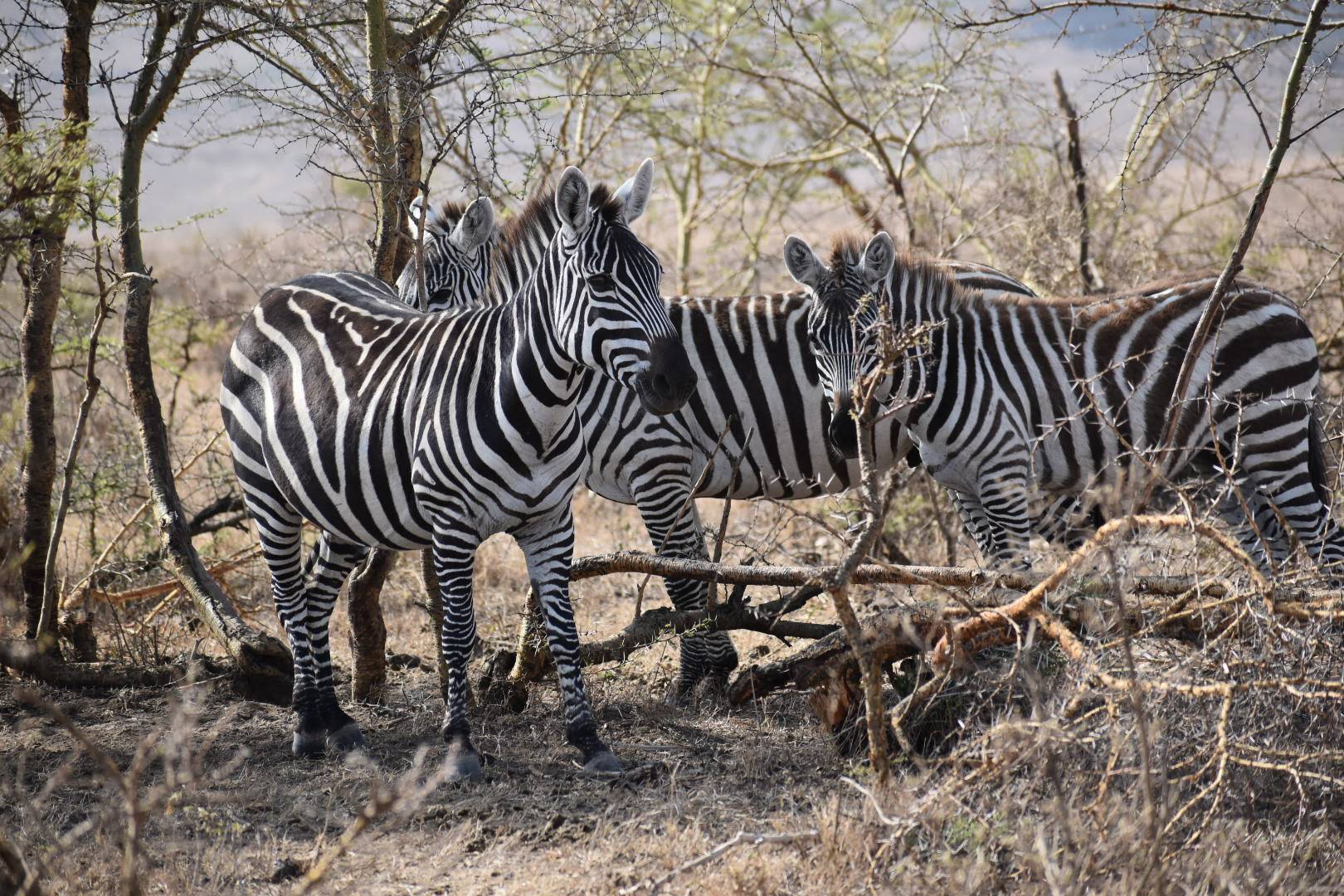
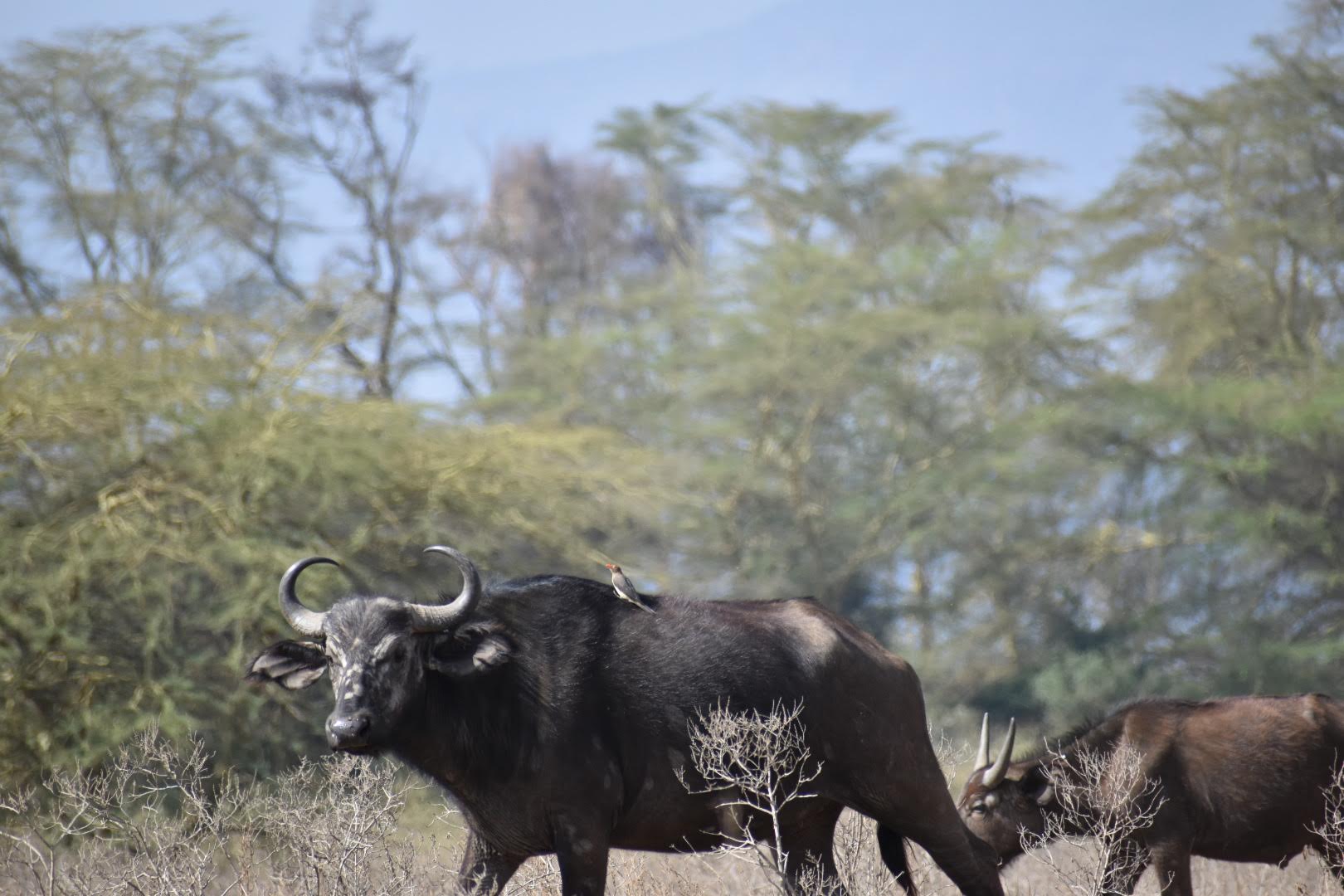

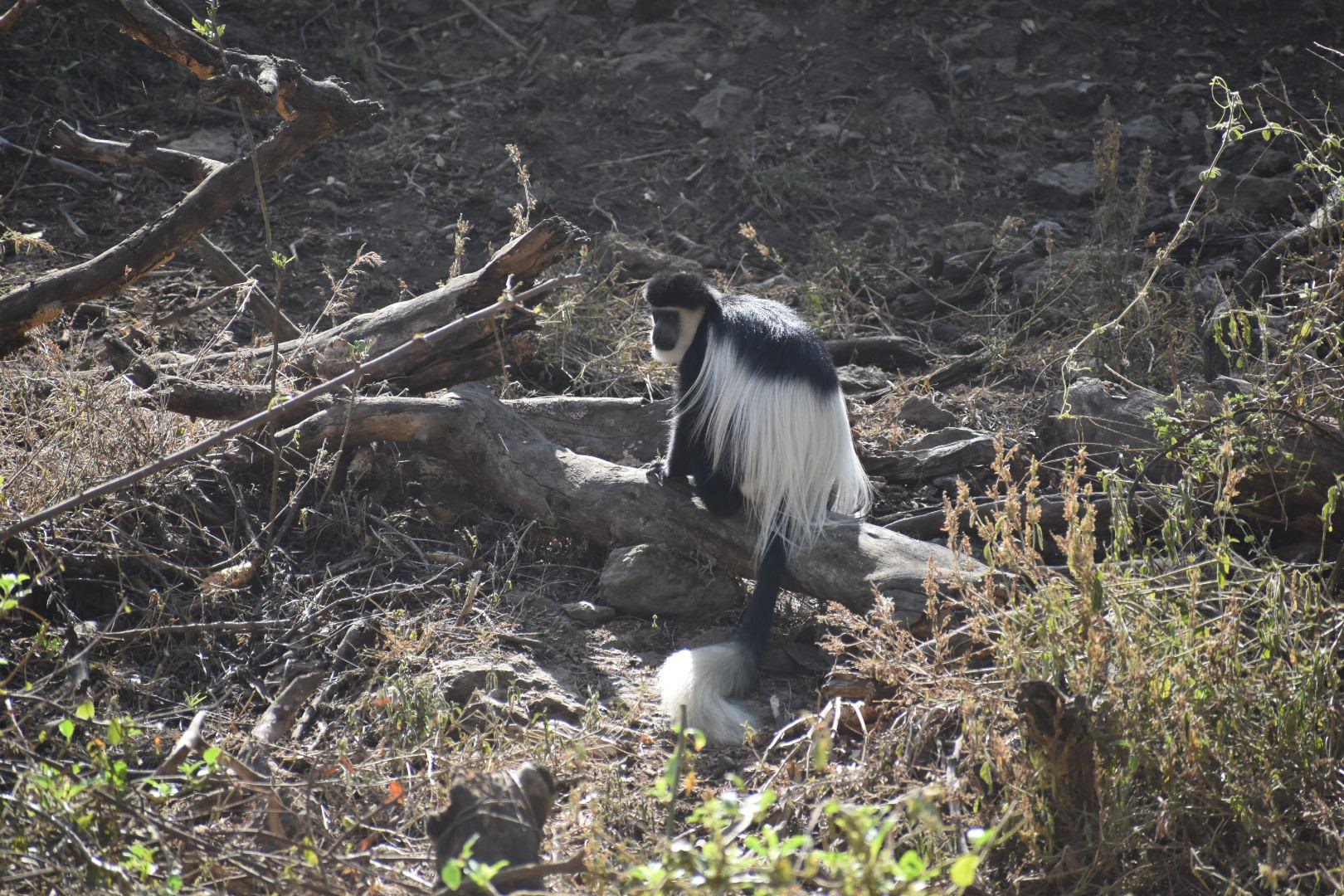
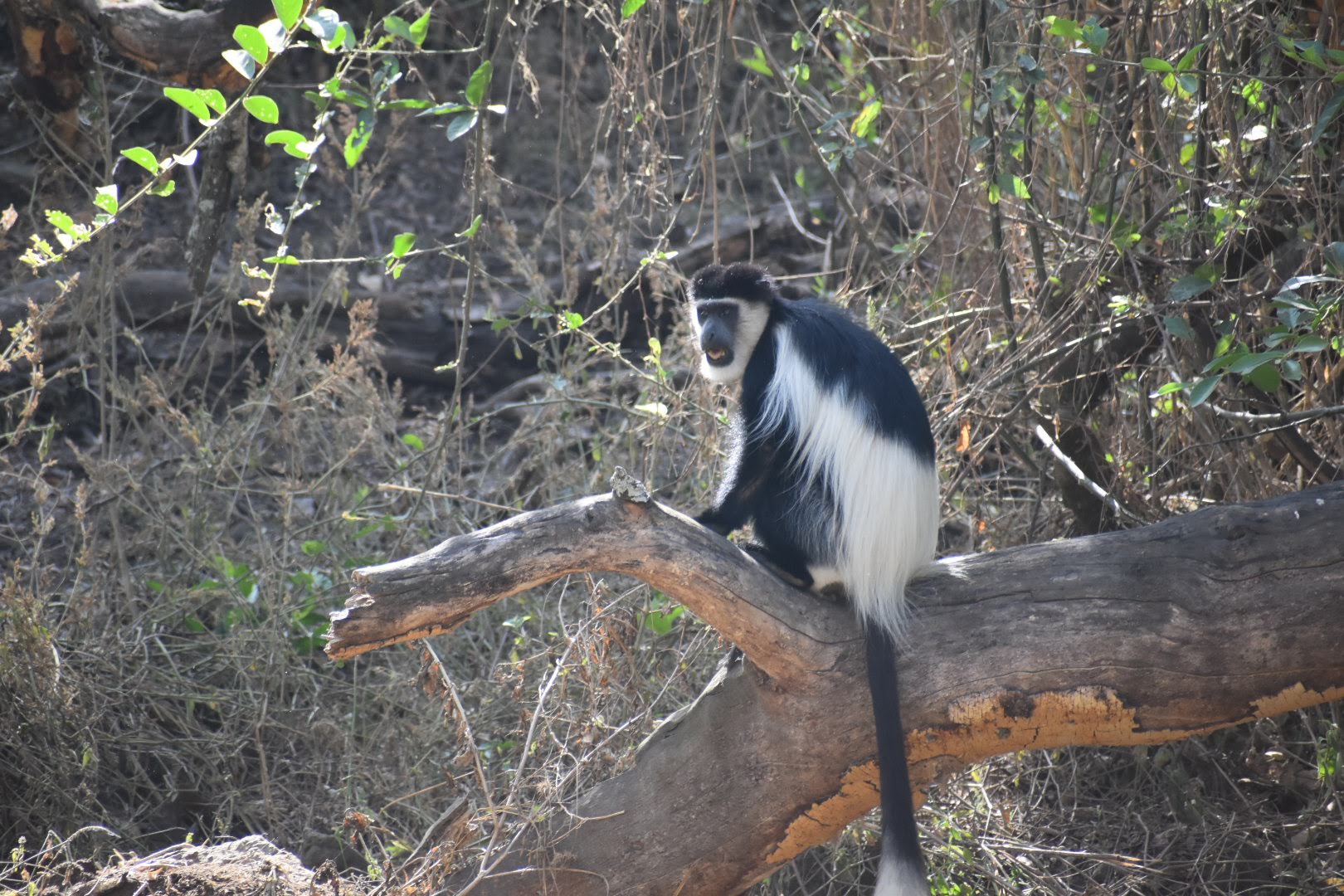
We set off after a few minutes of watching the monkeys, continuing along the dirt track that bordered the eastern shore of the lake. We first saw an Osprey high up on a tree branch, a few Waterbucks, Impalas and then, on another tree, its trunk fully submerged in the lake, an African Fish Eagle. David told us to listen for the “Sound of Africa”; we did and sure enough it sounded off shortly thereafter! Listen to it here (credit Rory Nefdt).
We then saw a few Pelicans, a Little Egret, some Egyptian Geese and a few more Buffalo. Right after that, we spotted a partly submerged Hippo just off the bank of the lake.

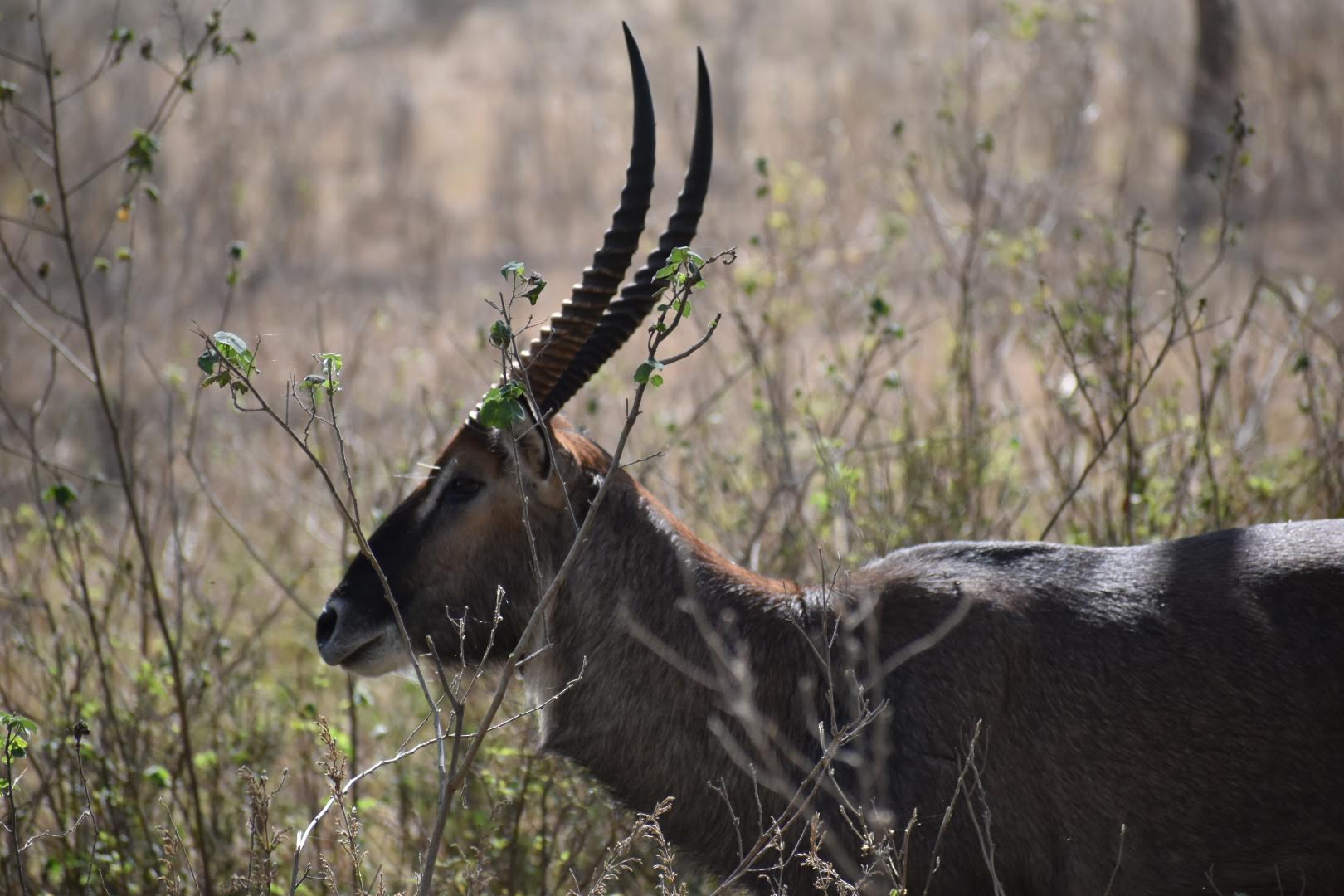
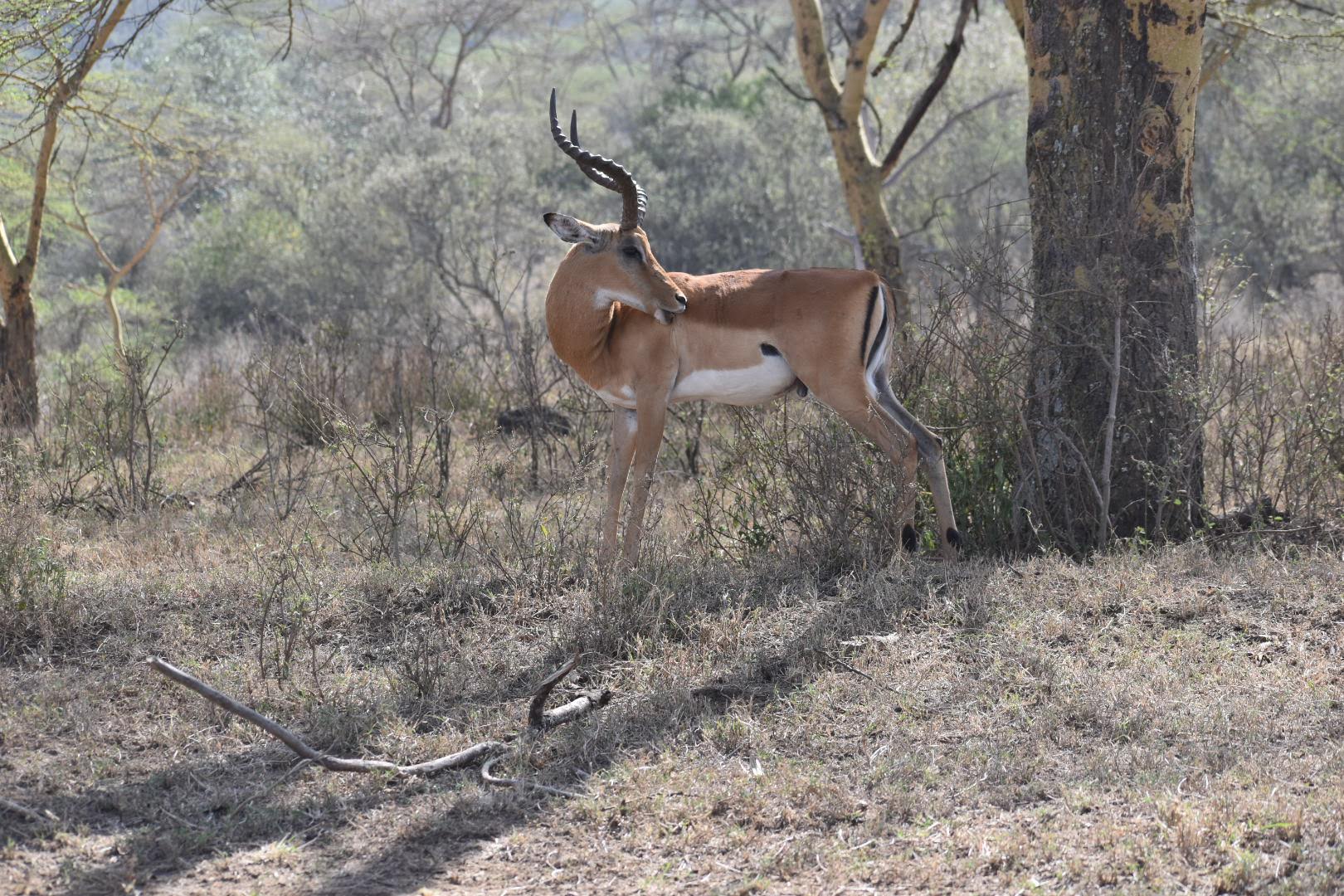

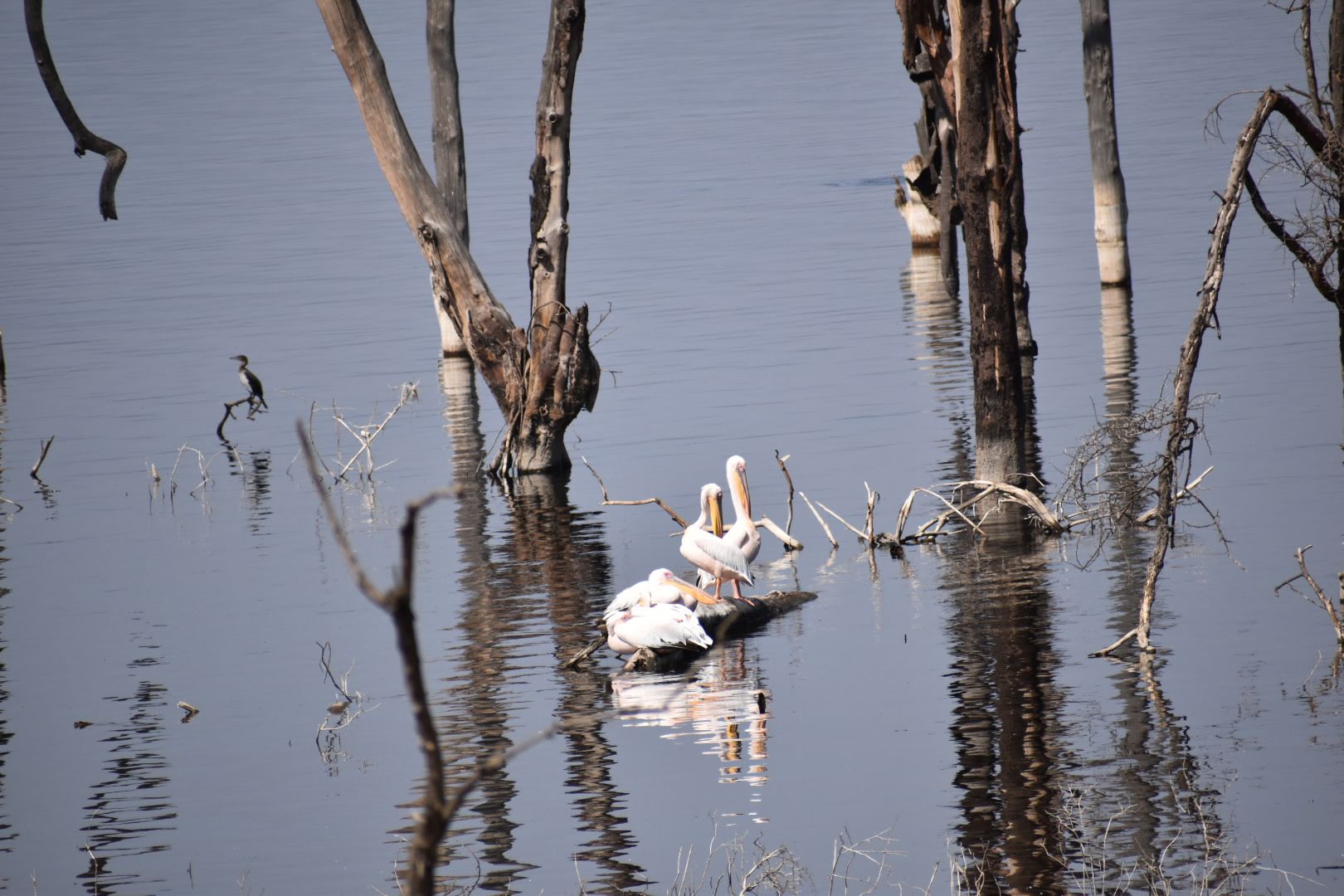
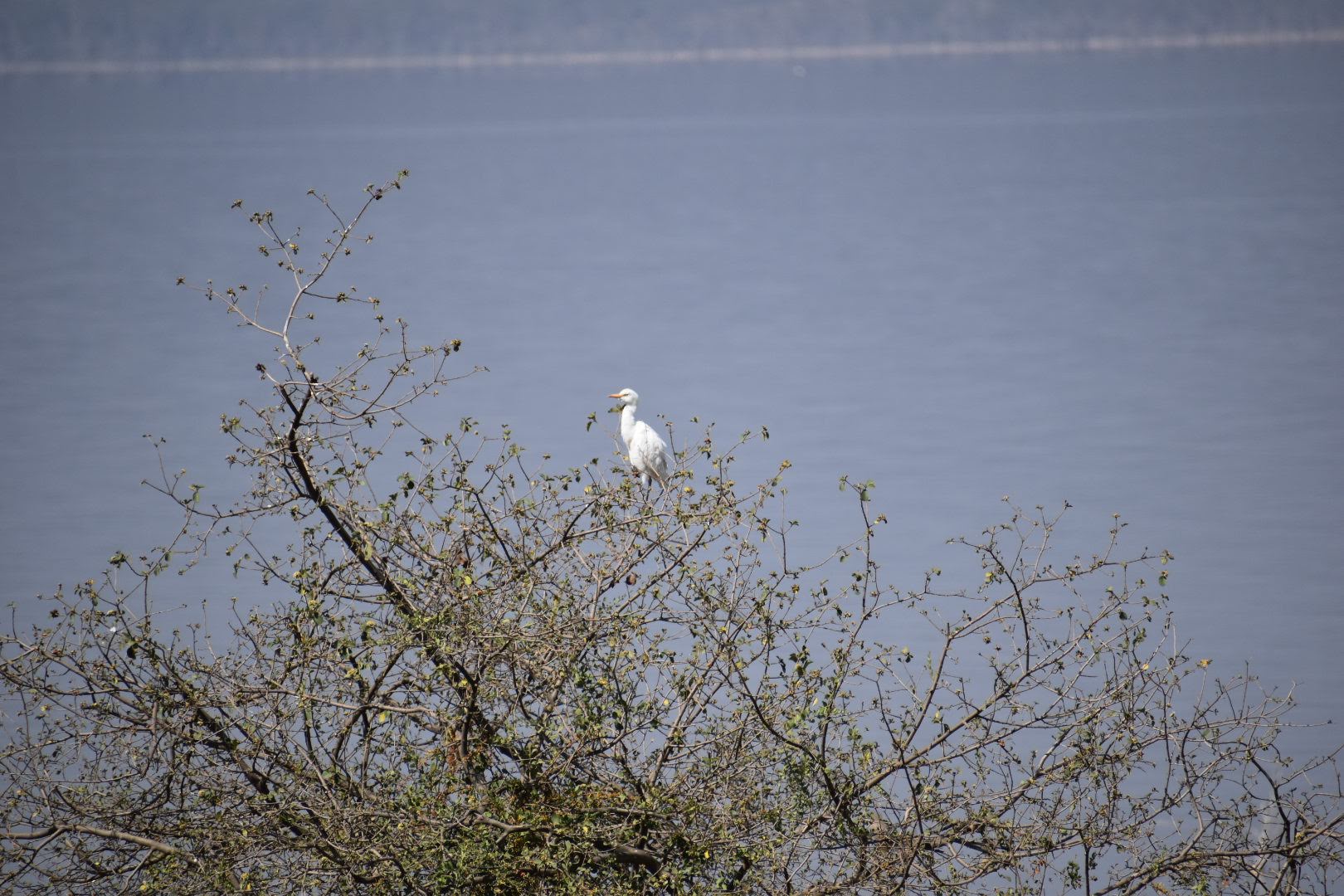
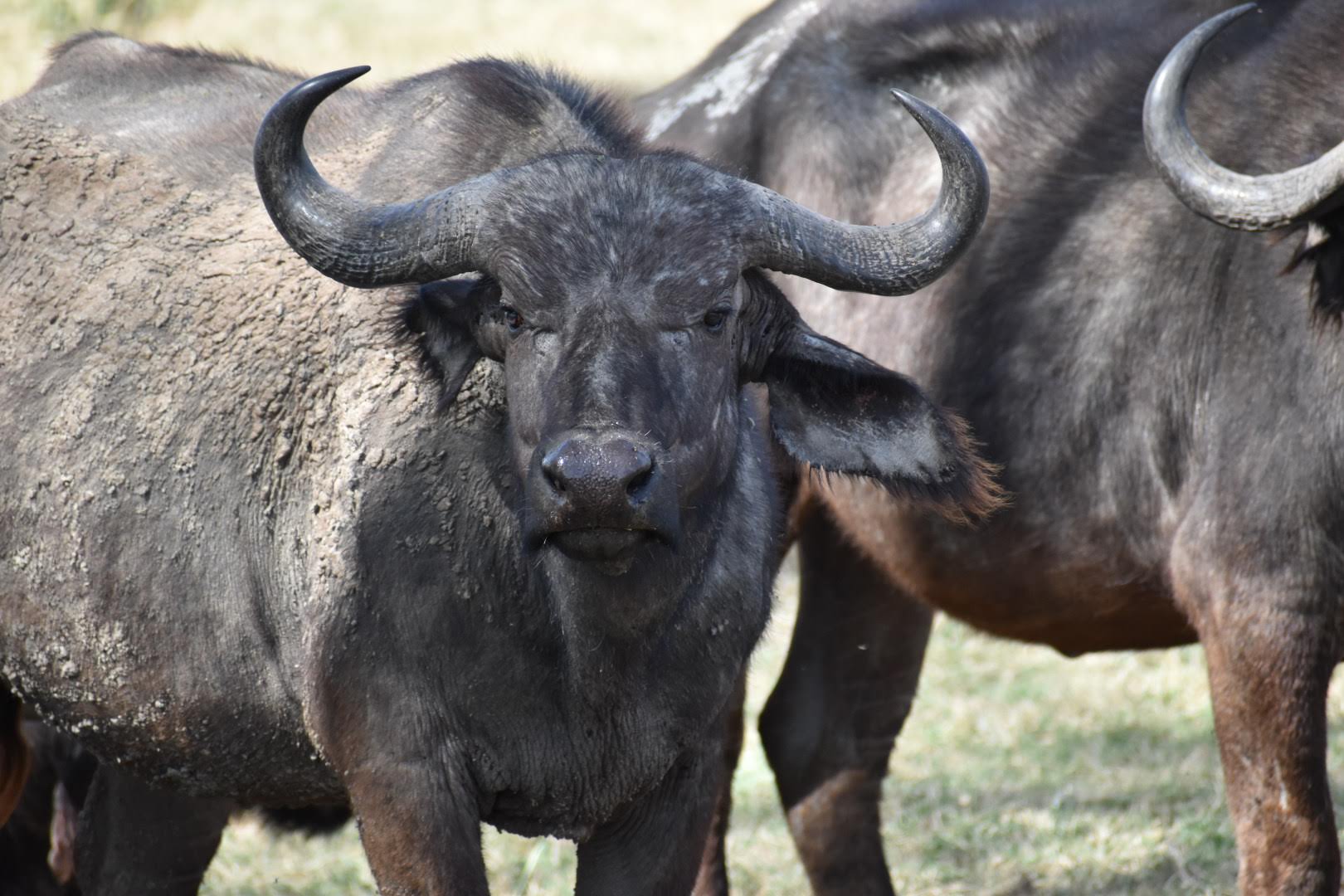
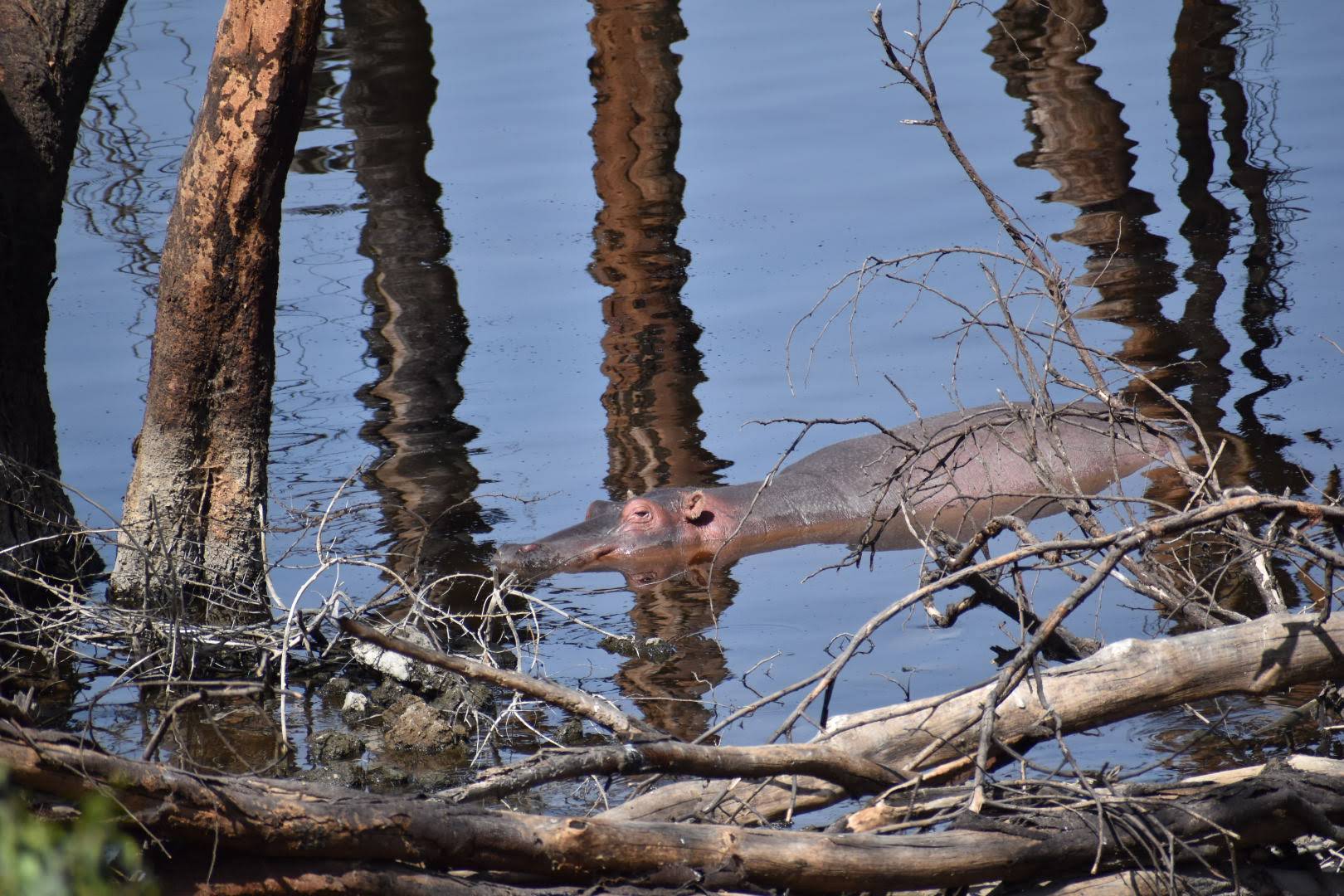
After a few minutes, we approached the southern tip of the lake where we crossed a bridge. There we happened upon a flock of colorful Flamingos. David told us that there used to be millions of these beautiful birds on Lake Nakuru but that the numbers had diminished significantly, in part due to pollution from industries that dumped wastewater in the lake and in part due to changes in the soil that then absorbed less rainwater, causing periodic flooding and consequent reduction in the algae on which the birds fed. We felt saddened that we would not be able to see the gigantic flocks of flamingo for which Lake Nakuru was justly famous. There was a flat mud bank to the lake right after the bridge and David drove onto that. We were able to hop off the vehicle and I took advantage of that to photograph the flamingos and other birds: the Little Grebe, some Pelicans, a Marabou stork, gulls, a pair of Egyptian Geese with a Black-winged Stilt and a Yellow-billed Stork with a Marabou.
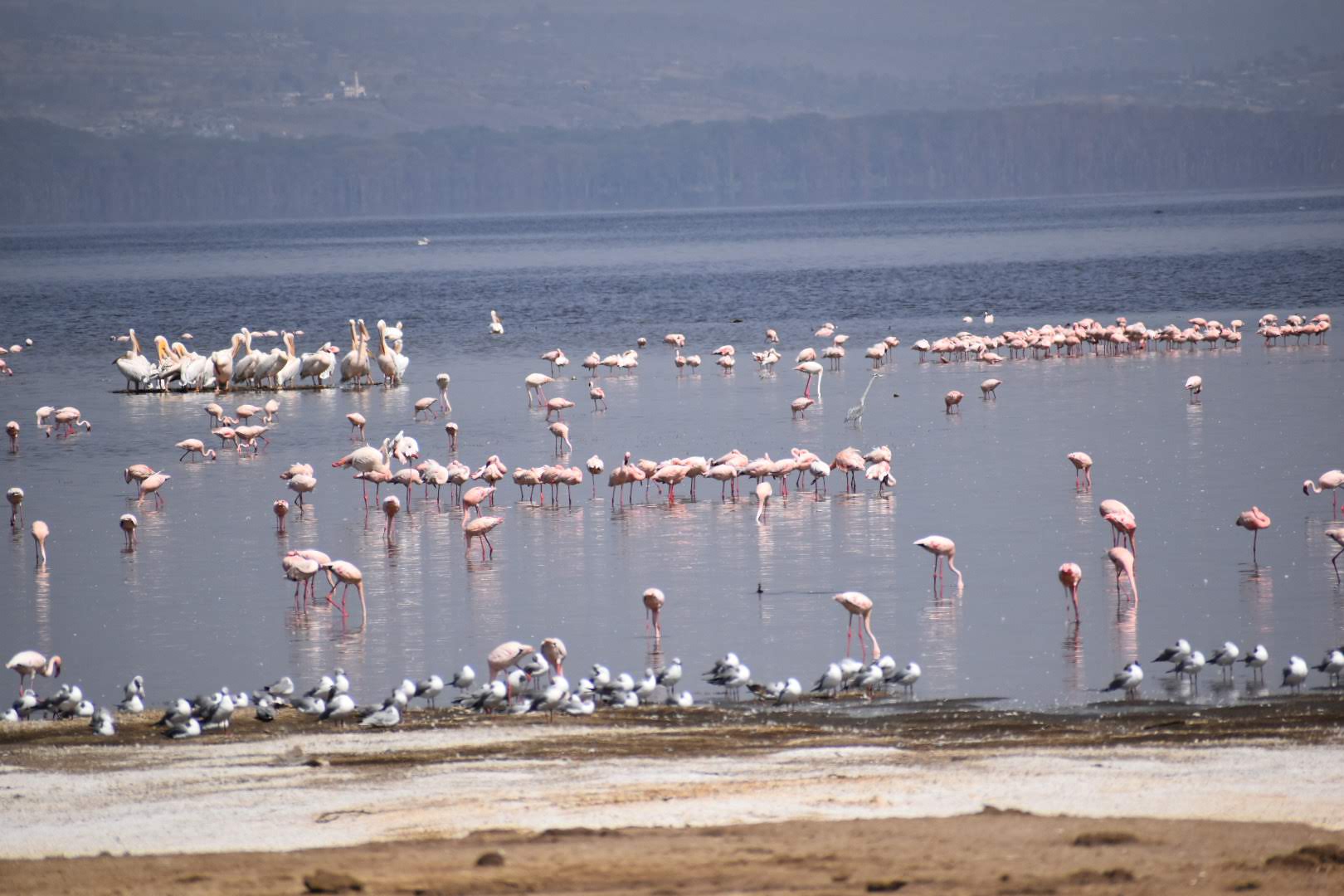

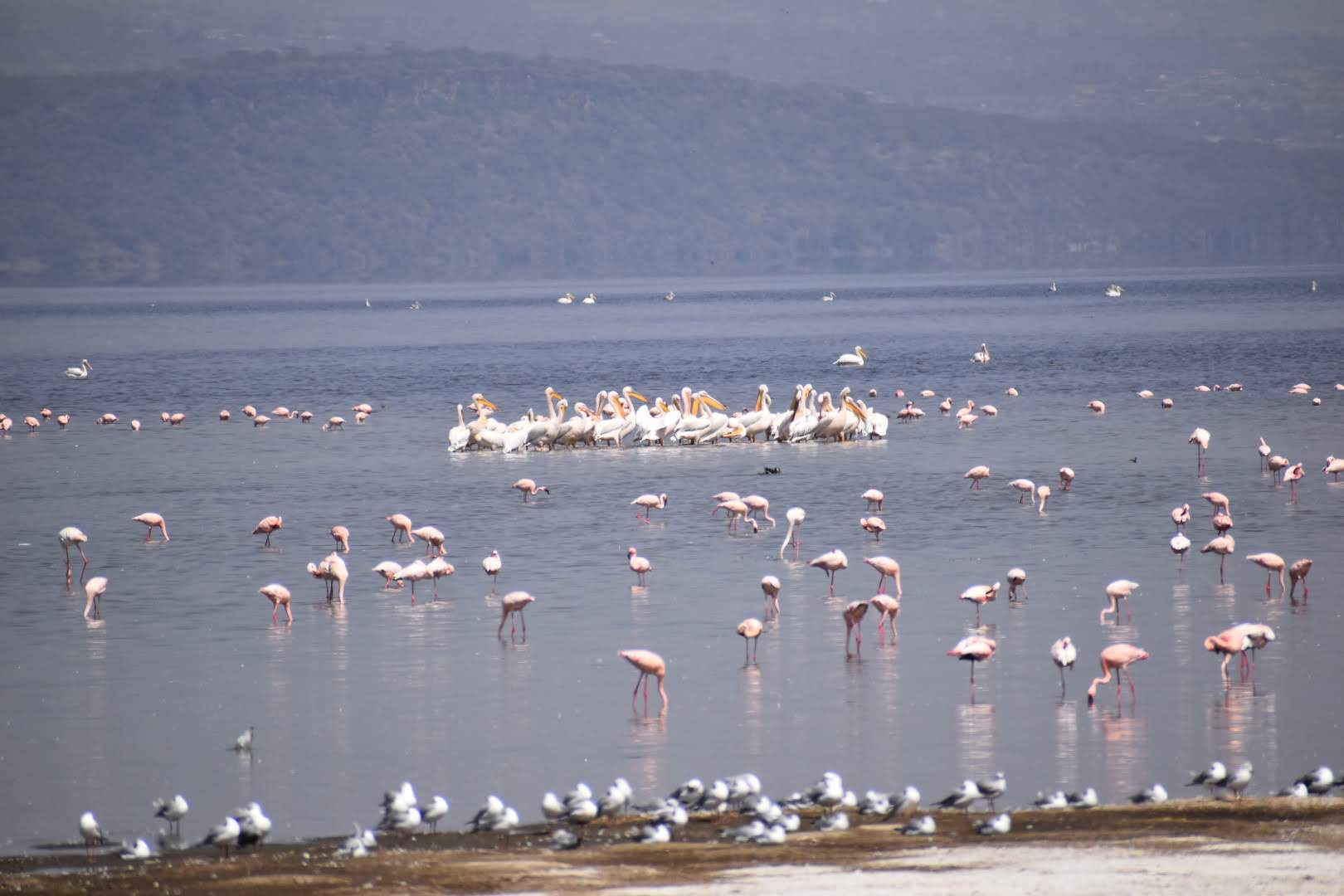




We spent about a half hour at this idyllic spot on the southern shore of the lake. By then it was just past 11:00am and the sun, high-up in the sky, was beating down on us. We decided to set off for the more wooded parts of the park. David put the Toyota into gear and soon we were back on the dirt track that led further south and away from the lake. Shortly thereafter we spotted our first Giraffe. David stopped and, while I was taking pictures, told us that this was a Rothschild Giraffe, a third species of Giraffe in Kenya, the others being the Masai Giraffe that we had seen in Amboseli, and the Reticulated Giraffe we had seen north of the equator at Samburu. We learned that these were distinguished by being taller and paler than the Masai Giraffe. We then spotted a beautiful Black-headed Heron followed by the first Eland I had seen. David told us that these large antelope can grow to be even heavier than a Buffalo that weighs in at close to 1800 pounds! Just after noon, we pulled up by a tree encircled by three Zebra, one of which scratched its side vigorously against the trunk. They were about 4 feet from the side of our vehicle and were quite unalarmed by our proximity.

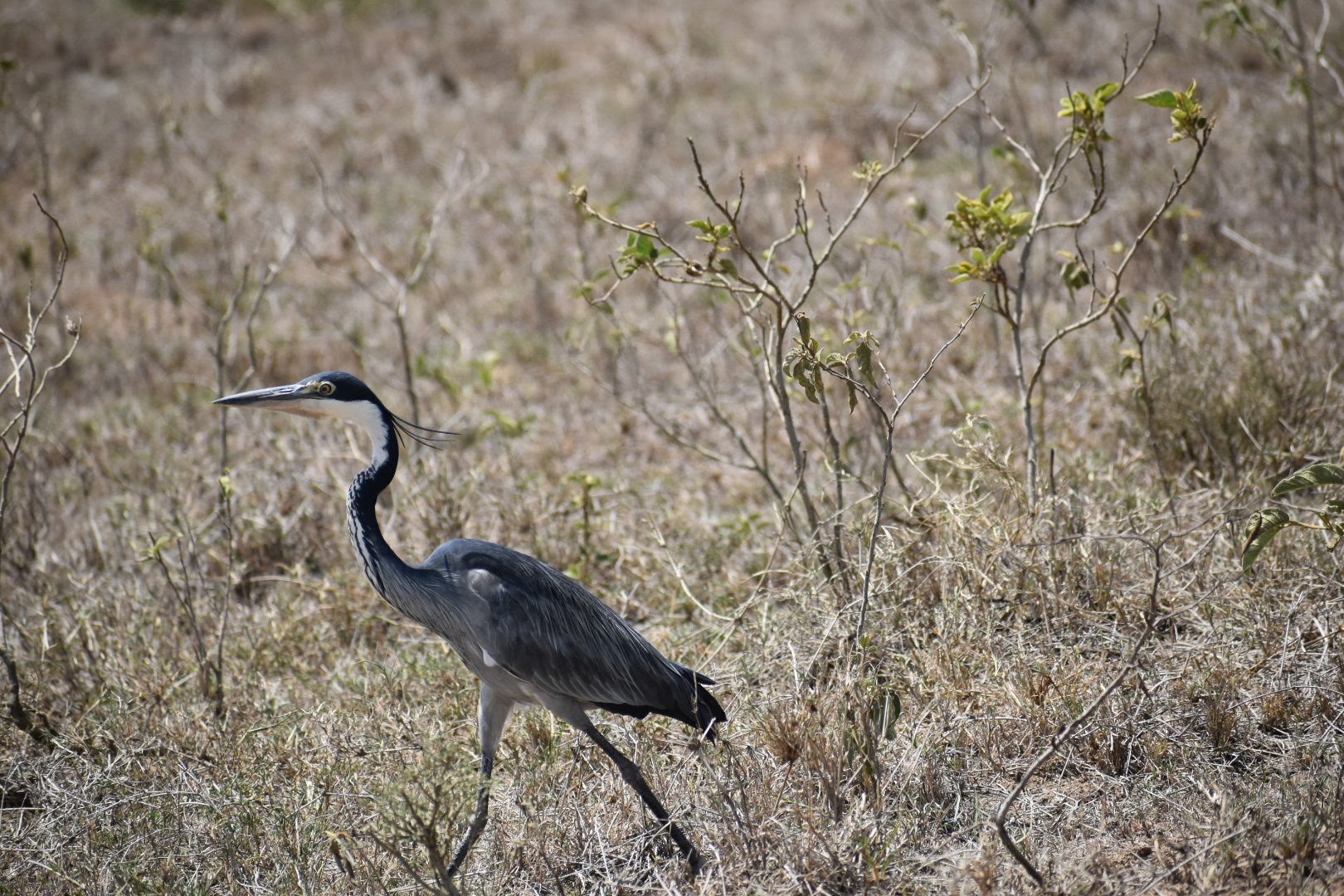
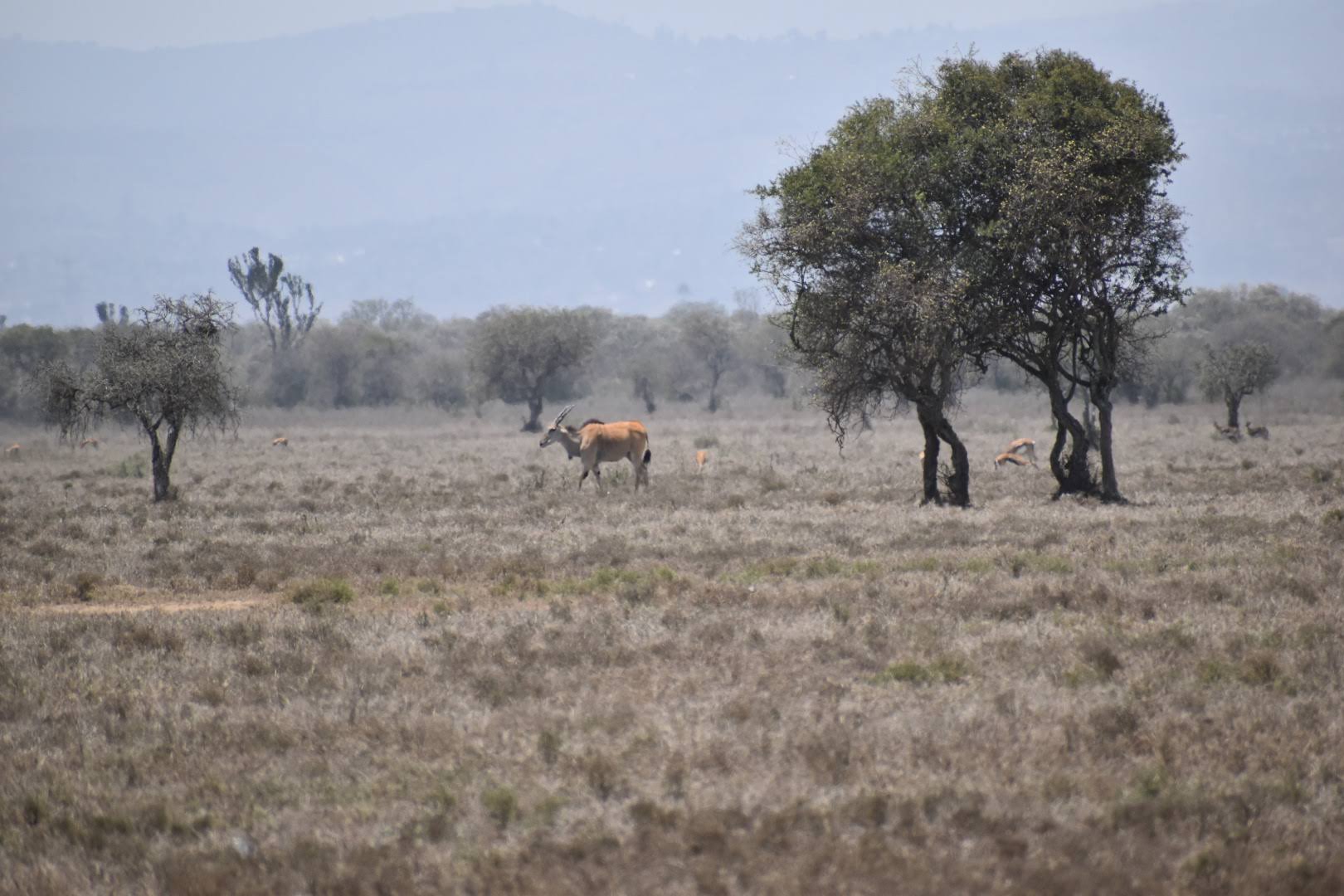
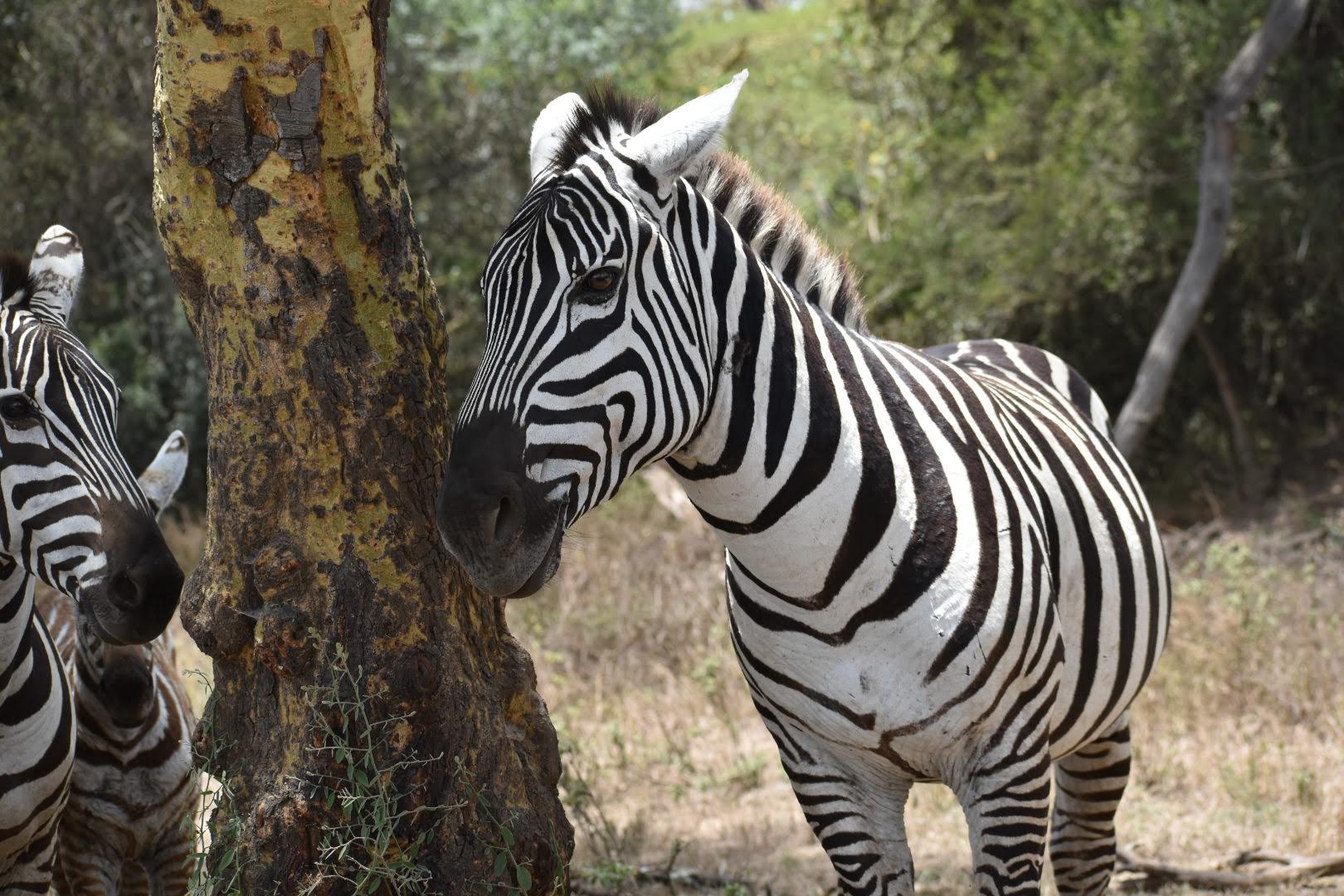
By now it was past noon. David asked if we were hungry, and we replied in the affirmative. He drove off further south and a little west, following signs for a campground. A few minutes later we arrived at a clearing surrounded by trees and a few feet above a muddy stream. There was a restroom at the back of this area and lots of park benches dotted the clearing under many Acacia trees. It was a pleasant place to picnic. We dismounted, used the facilities, and sat down on a bench for our repast. Sunbird lodge had packed a good lunch, and what we didn’t like we traded! As we ate, we chatted – David told us that he’d never seen the park in such a dry condition as on this visit. There was a light breeze and on the bench under the shade trees, it felt like a comfortable and lazy summer afternoon. If we weren’t busy trying to spot wildlife, I’d have been perfectly content to be seated on said bench with a book for company!
With our lunch complete and an apple for dessert, we got back in the Toyota and headed north again towards the lake. (By the way, I should mention that this Landcruiser is a fully covered vehicle and highway capable. But, for the time we spent in the park, David pushed the top open so that there was a good 3 feet or so where we could stand and view the wildlife without impediment.) As we passed the airstrip, I spotted a lilac breasted roller on a sign and was able to capture a few images. A little further on we saw a lone baby giraffe. It had apparently been separated from its mom but looked quite unconcerned. David told us that the Giraffe mom would (likely) eventually find the baby by using its height to look around and that mom and baby never strayed too far from each other. Soon we drove over the little bridge at the southern end of the lake and saw a troop of baboons. Most of the baboons scattered when they saw us coming except for the alpha male who looked at us without fear from 15 feet.
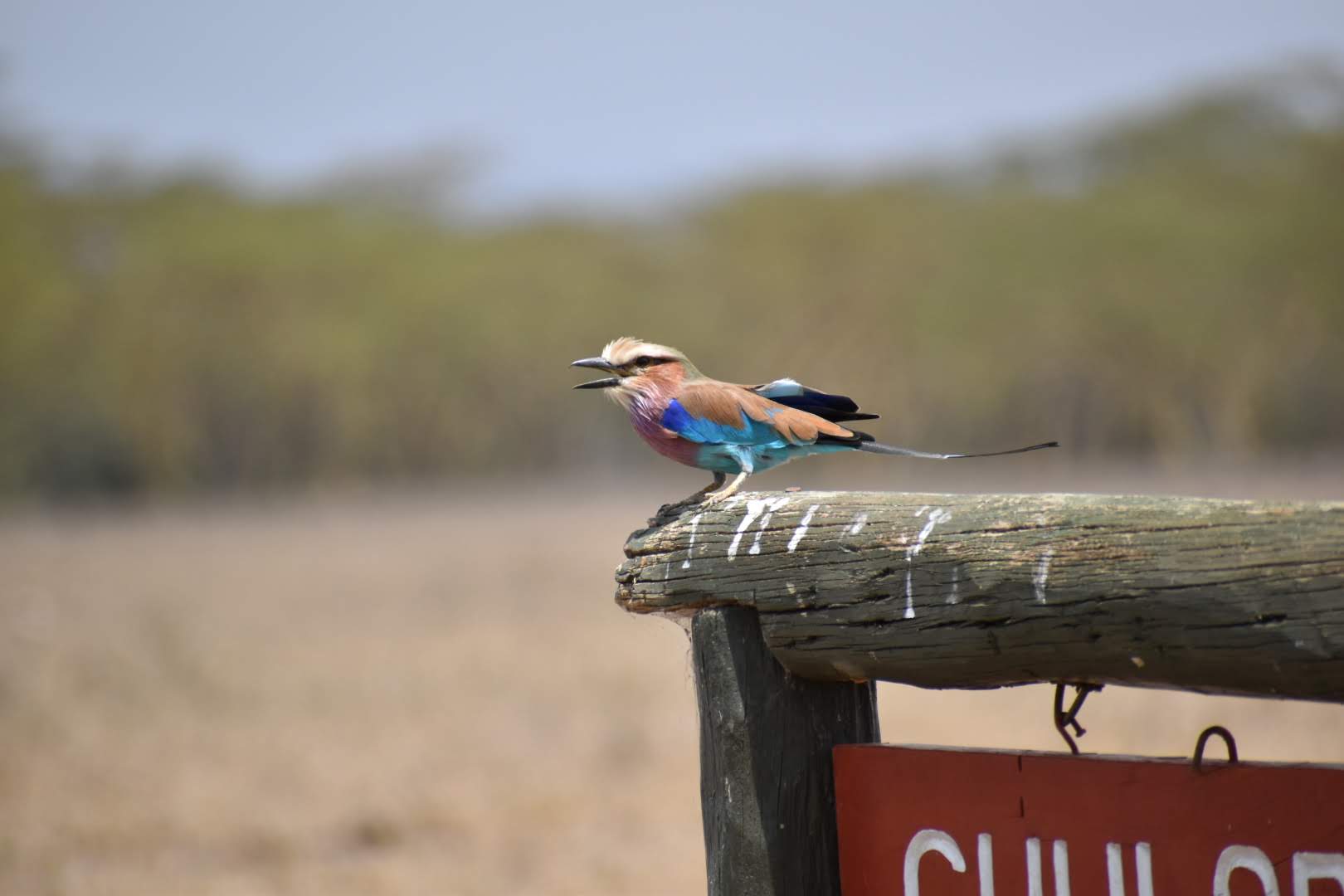
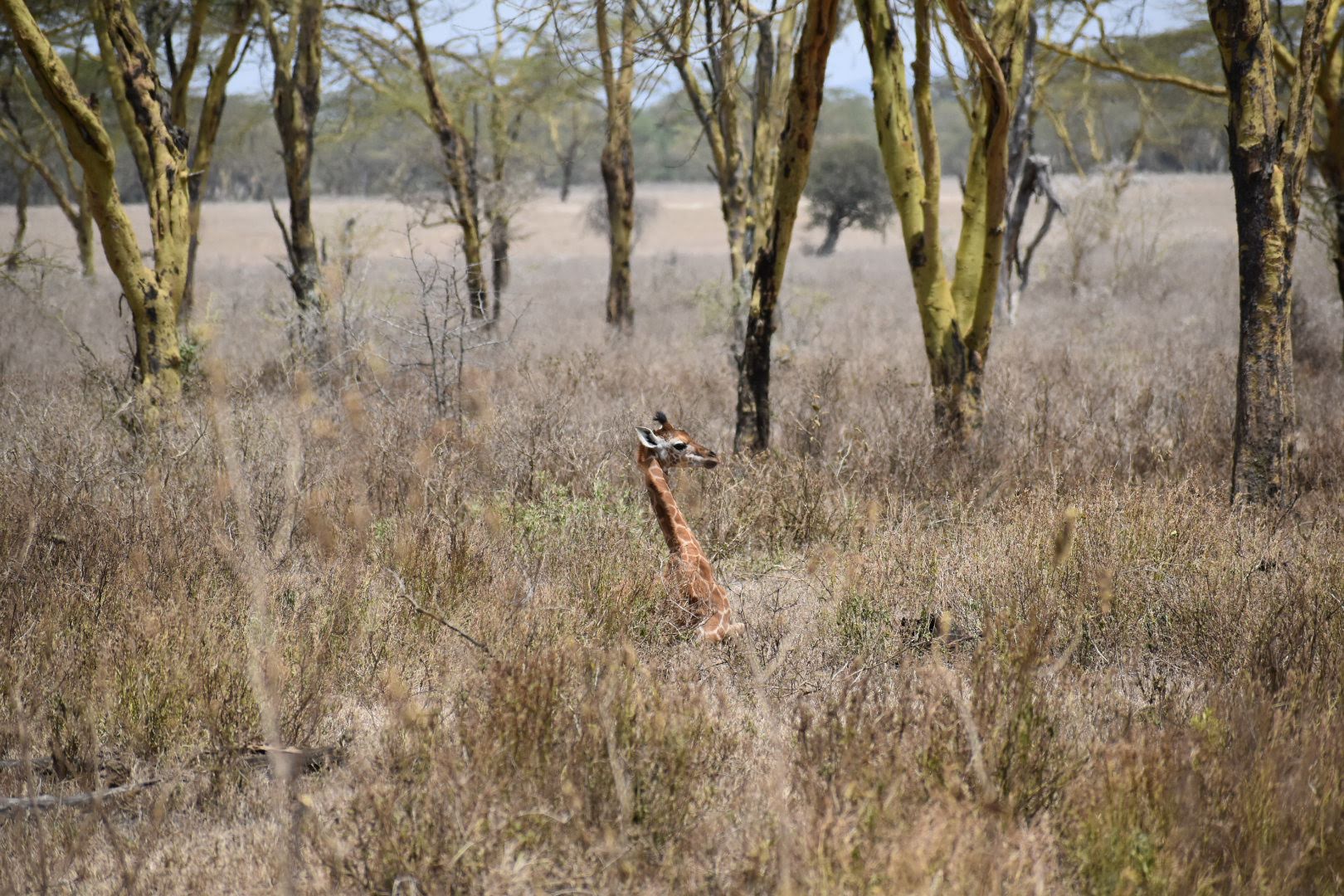
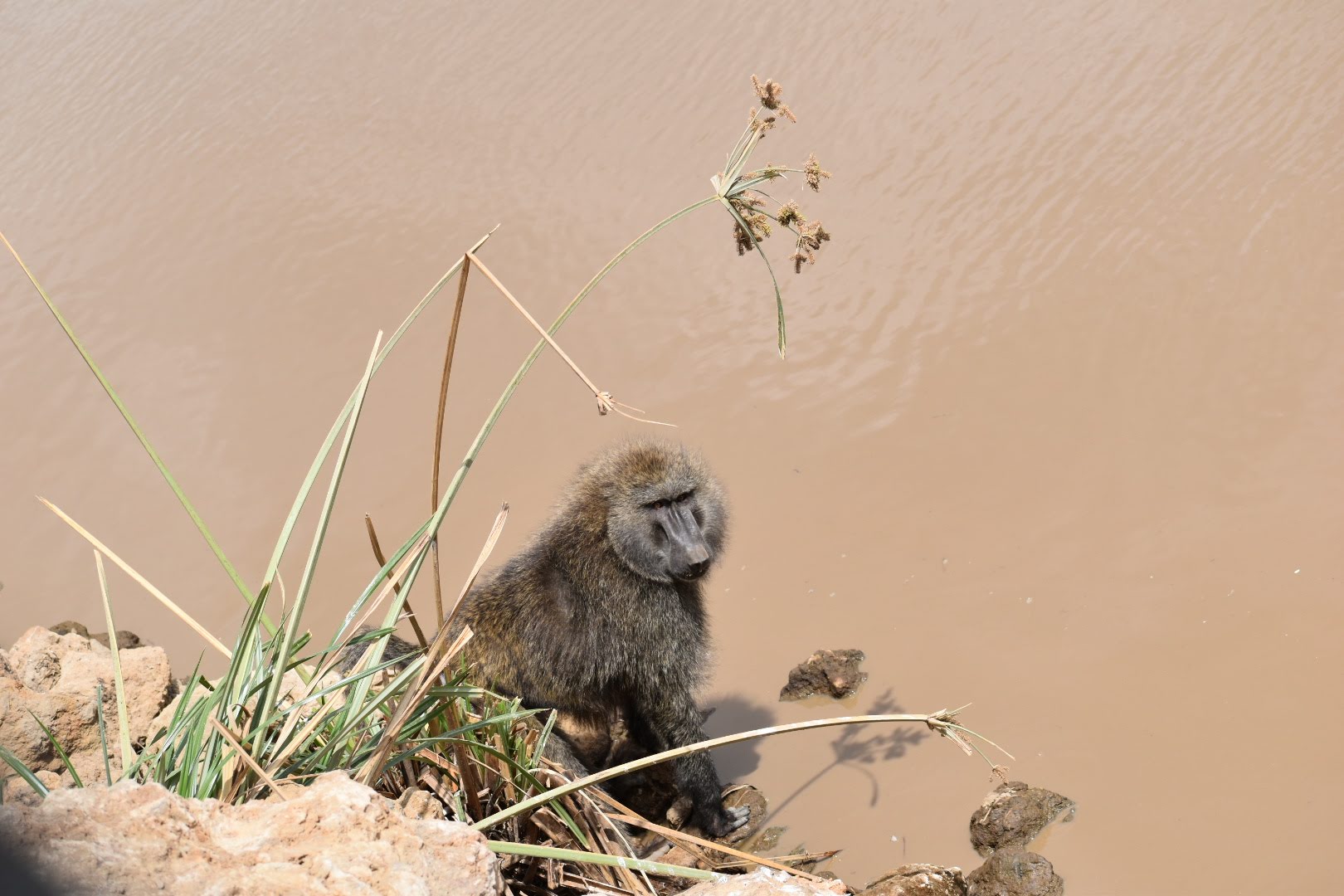
A few minutes before 3pm, we saw a Buffalo carcass in the near distance surrounded by Vultures and Marabou stork, a family of Pumba nearby as well. We didn’t think much of it at that time and kept driving. But this became one of many! In the space of about 45 minutes, we saw 10 more carcasses. David was hugely concerned (we didn’t know what “normal” was!) and we decided to stop off at the ranger station at the gate to let them know. David speculated that it may be a disease of some kind killing the Buffalo – this had happened in the past.
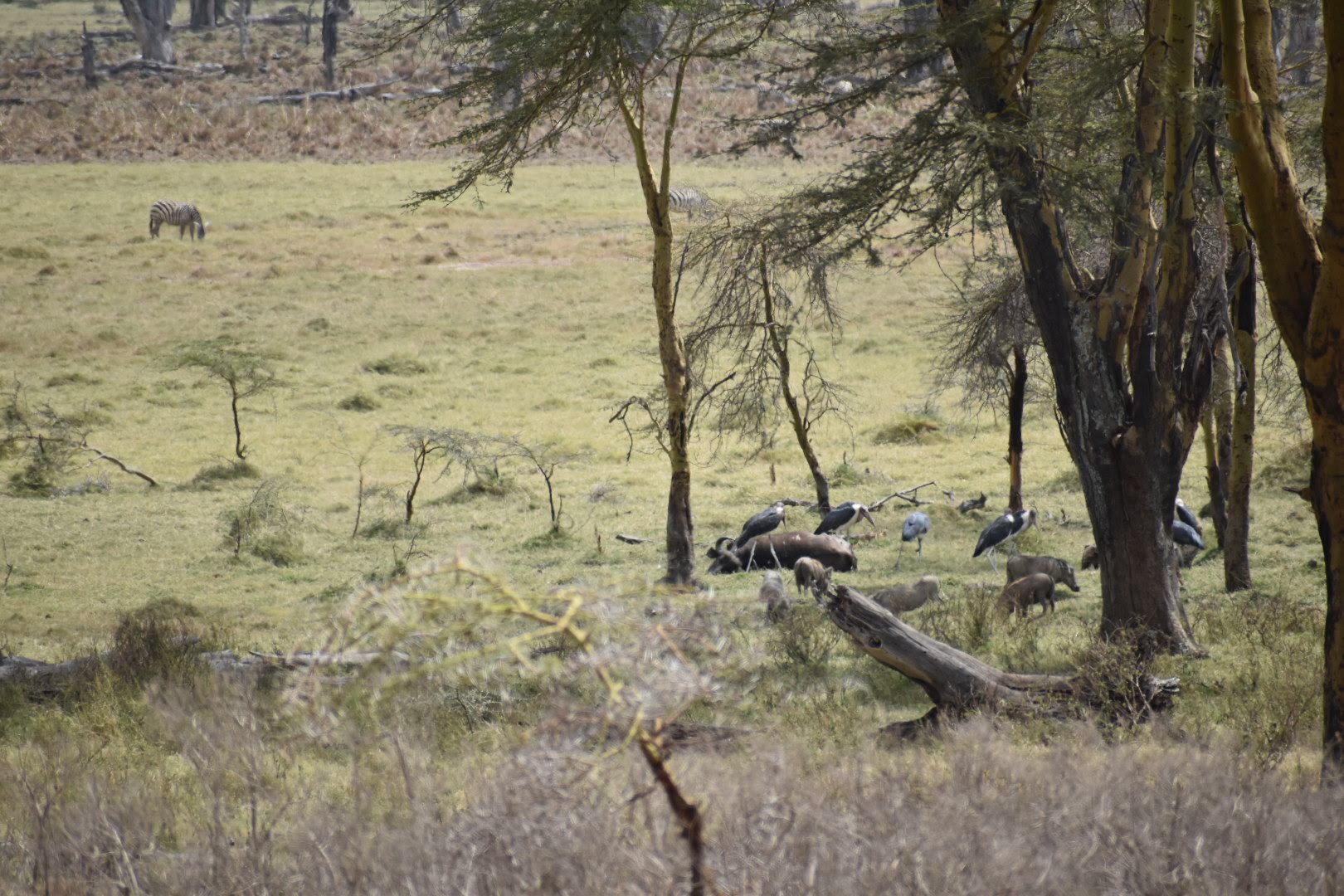
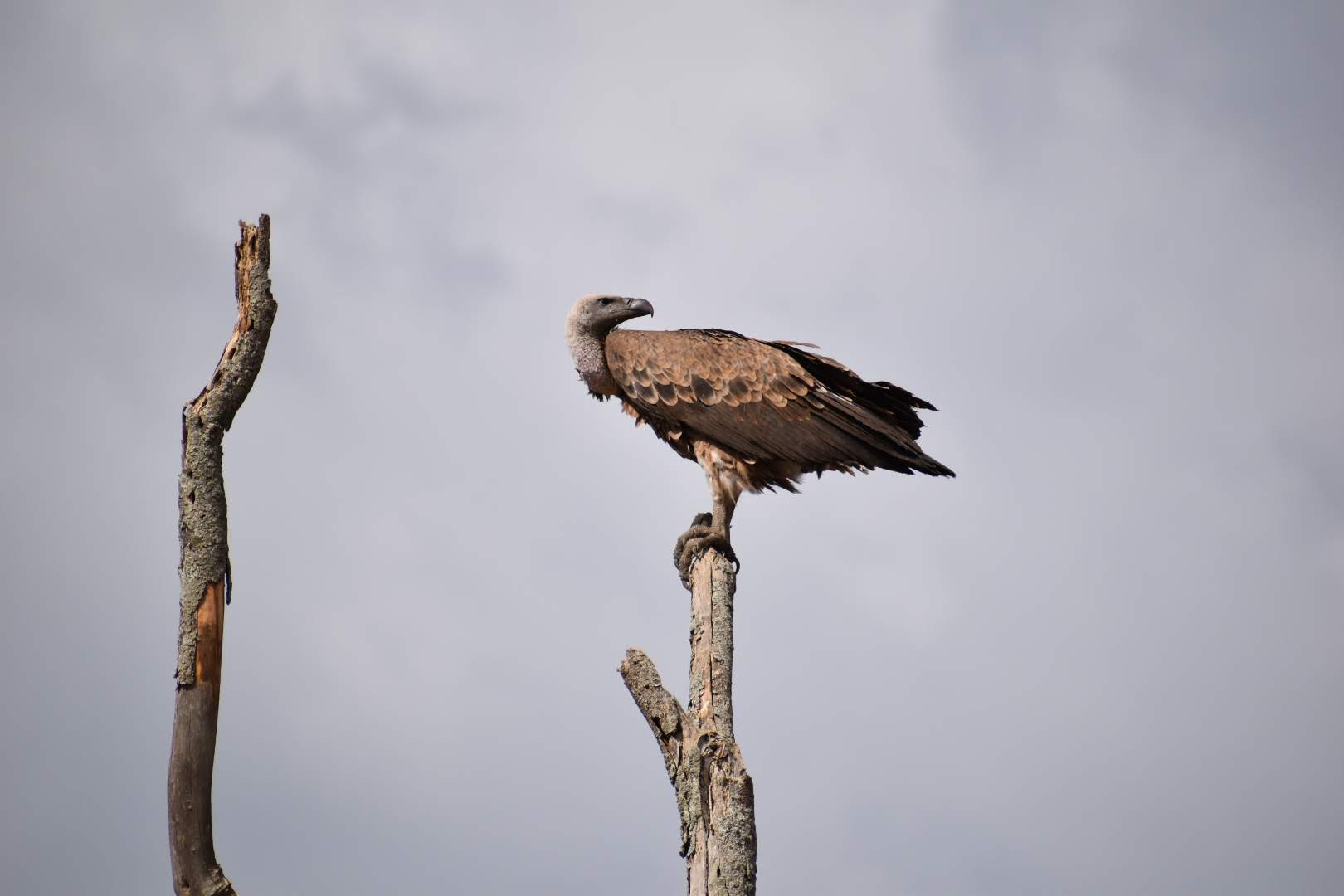
A little later, we saw a warthog mom and baby digging in a mound. There was another male warthog making a circle around the pair. Periodically, the warthog mom would charge the male to warn it off. David said that the male was quite capable of killing the baby! The mom was clearly in no mood for any interference and didn’t let the male approach within 10 yards. We watched this drama unfold for a while and then regretfully drove off, it being time to head back to the lodge.
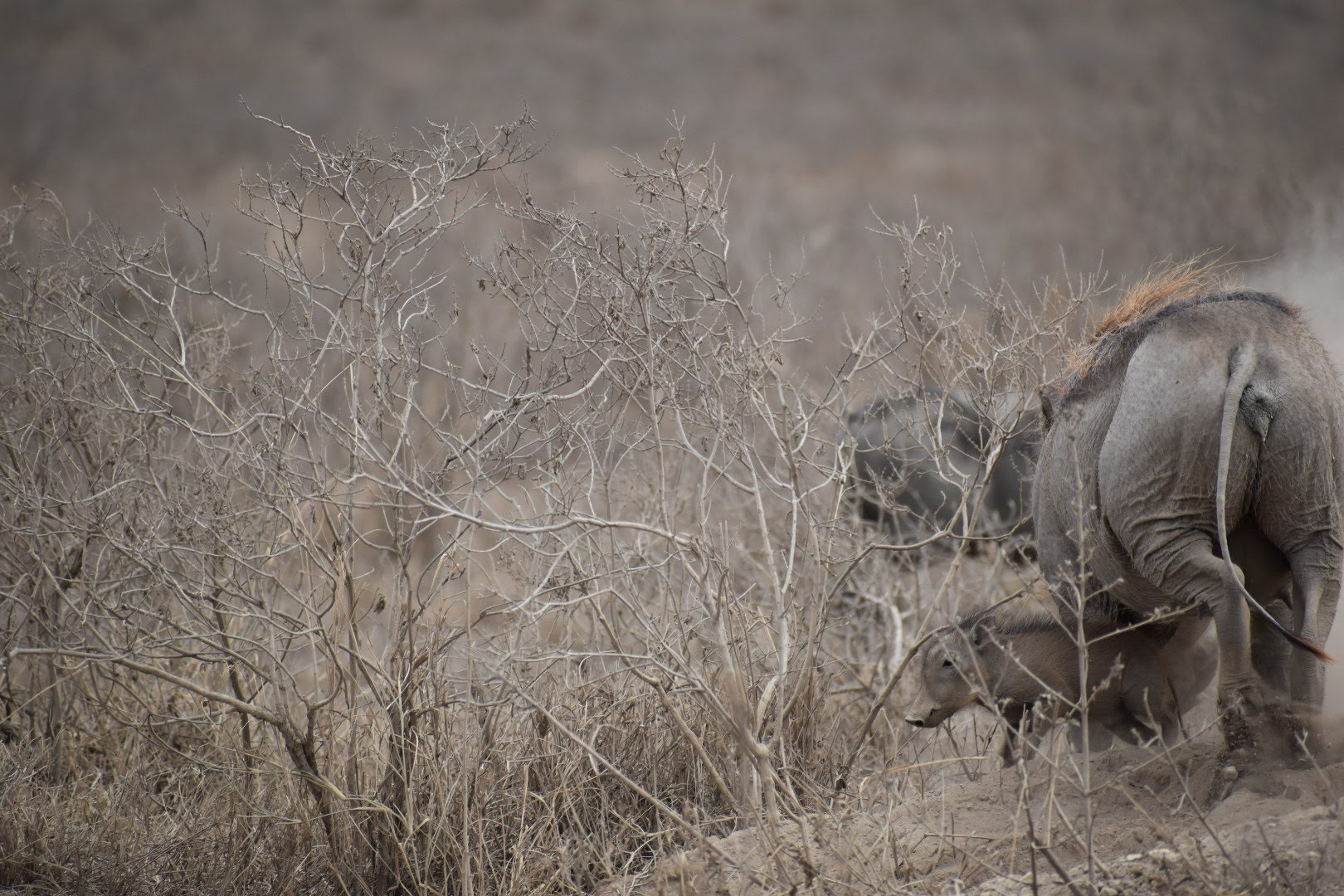
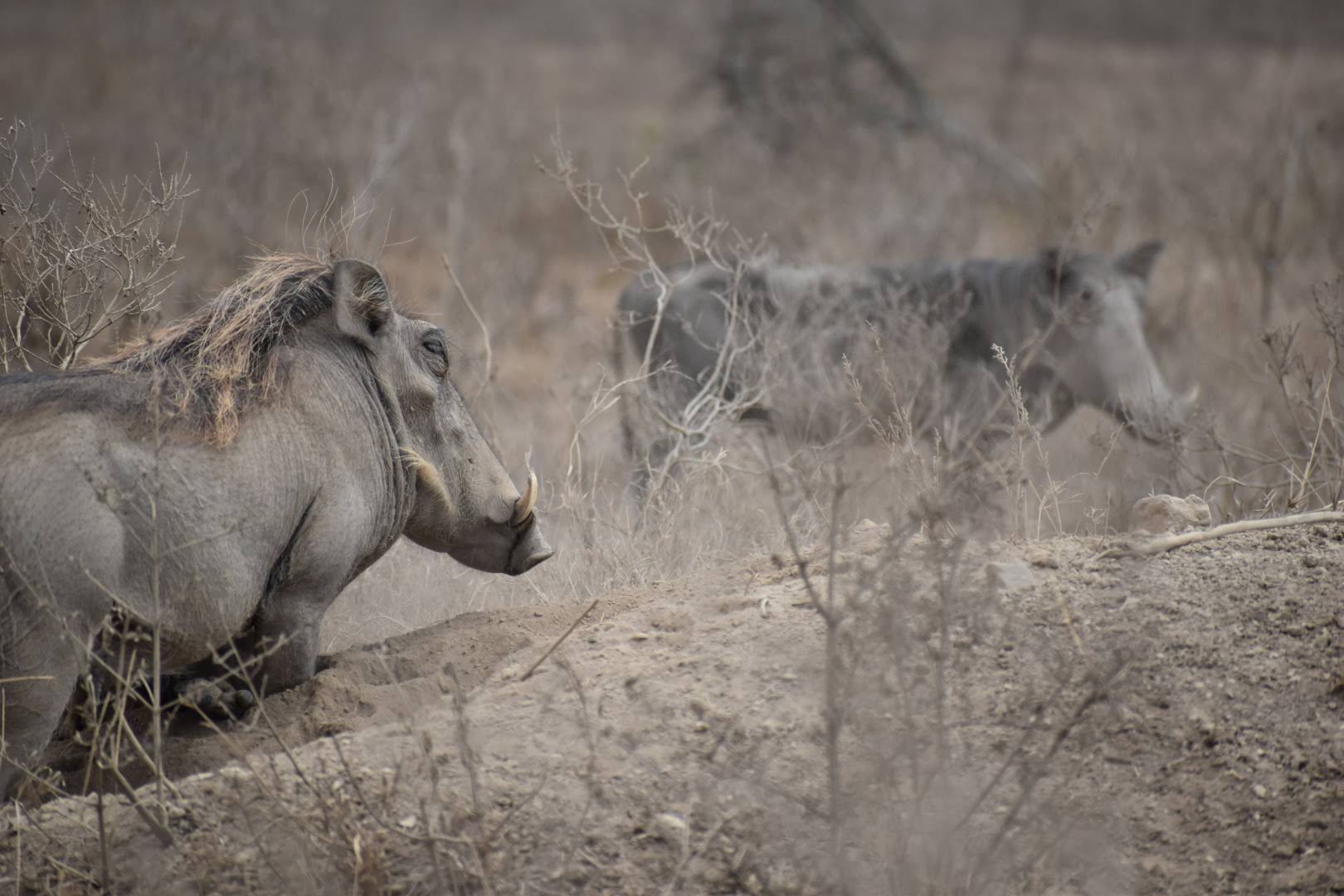
We drove another 20 minutes or so before we arrived back at the Lanet gate to Lake Nakuru Park. There, David went in and talked for a few minutes to the rangers to tell them about the mysterious Buffalo deaths. When he returned, he said, “They know about it. The buffalo are drinking too much of the alkaline lake water given how dry it is. That’s causing some of them to die off.”. We were relieved to hear there was no disease and since the rains were due in 20 days or so, there ought to be no large-scale issue.
With that, we got back on the highway and headed east towards Sunbird Lodge on Lake Elmenteita. A half hour later of watching the 22-wheelers make their way from Mombasa, Nairobi, and points east to Uganda, Rwanda etc. in the west, we were back at Sunbird Lodge making our way to Marabou cottage. We’d been out 9 hours since we left that morning and were feeling hot and dusty; we headed in for a shower followed by a cup of tea (and biscuits!) on the porch of the cottage overlooking the lake.
At about 7:00pm we headed to the lodge entrance intending to walk around the gardens and take some pictures.. As we went around the main building the manager (I think his name was Phillip) came running out of the structure and hailed us to stop! We naturally asked, “Why?”. He said that they sometimes had Buffalo come into the lodge grounds at night, sometimes breaking through the electric fence, in search of greener grass. He was very apologetic and we asked him to relax and headed back to an early dinner in the dining area.
I think we decided to eat indoors this time since our table was already set indoors with a sign saying, “Reserved for Marabou”! This time, we had Daniel serving us, a tall, young, and impeccably dressed Maasai; all he lacked was a waistcoat! Dinner was eminently forgettable but the fruit that I’d opted for instead of dessert was wonderful as always. We chatted a bit with Daniel and then headed back to the cottage where I spent a little time collating pictures and adding them to my master album for the trip on Google Photos. With that done, it was time for bed as we had another long day ahead of us visiting Lake Naivasha.
Random Tidbits and Musings
- At dinner, we found another couple – probably Kenyan – seated at a table not far from us. Those were the only other visitors at the lodge during our 3-night stay.
- My overall impression of Lake Nakuru National Park: Hot and Dry! Perhaps it would have been nicer to visit earlier in the season. However, it was a great educational experience, especially with David as our guide, and I am glad we visited. Sure! We didn’t see any cats and were mildly disappointed at not having spotted a leopard, but that didn’t detract from the experience. We saw a tremendous diversity of other wildlife and seeing Rhinos up close was great.
- Sunbird Lodge while at a wonderful location didn’t live up to the high standards that we had come to expect in Kenya, especially for food. We had had variations of the same menu for dinner on 2 nights. Iris decided to chat with the chef to ask for some variety on the final night and did just that!
- We spotted a solar array with a huge tank to the left when facing our cottage’s entrance. That turned out to be the hot water heater. The wash basins had a sign next to them. Paraphrasing: if you run the hot water at night, you may not have any in the morning!
(Photos can be found on this Google Photos Album while videos are at this YouTube Channel.)
To be continued…
Pingback: Safari to Kenya – Lake Naivasha – Srini’s Blog